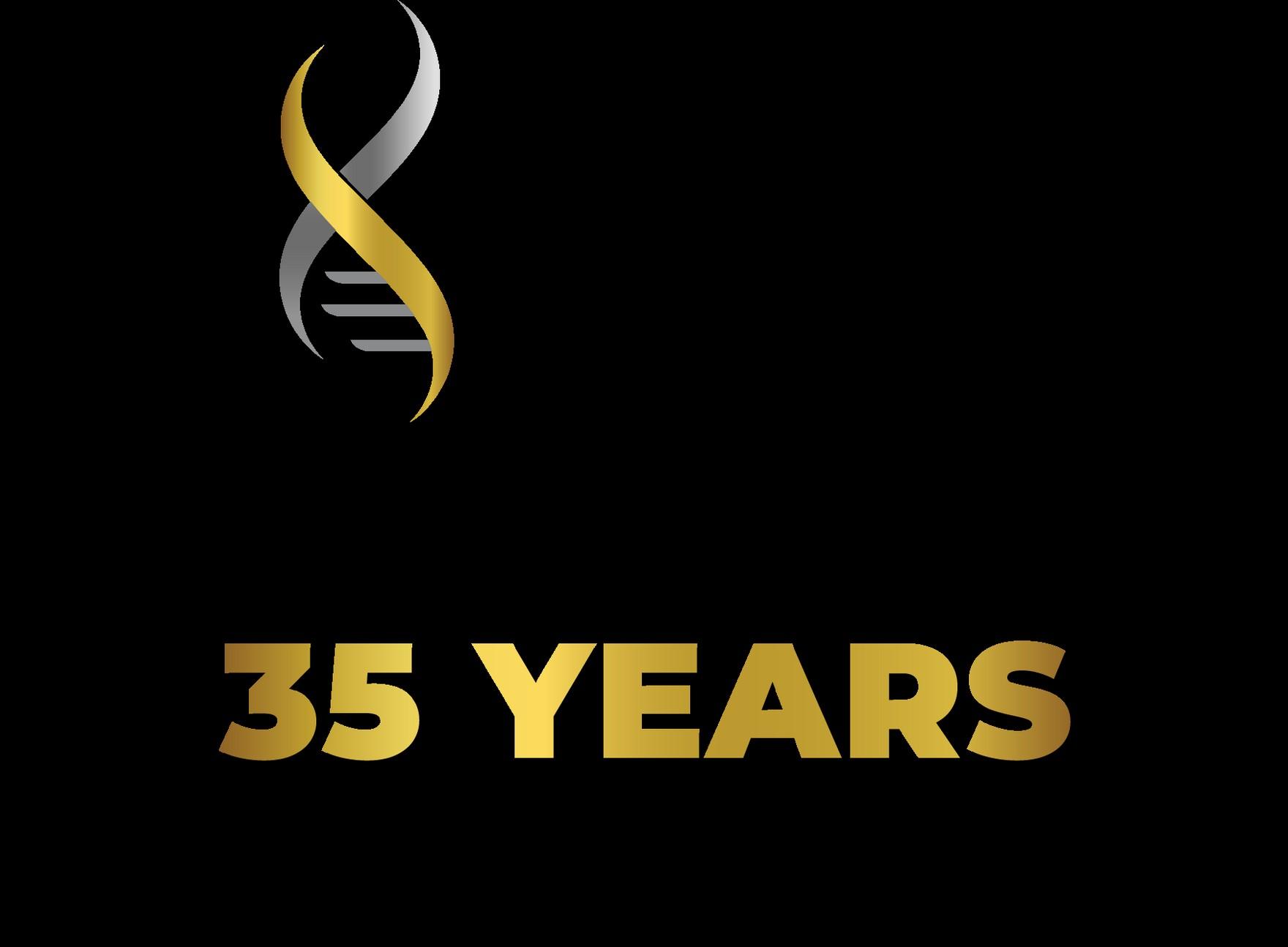

2025
IMF PATIENT AND FAMILY SEMINAR
LOS ANGELES, CA

AUGUST 15 & 16, 2025
Thank you to our sponsors!









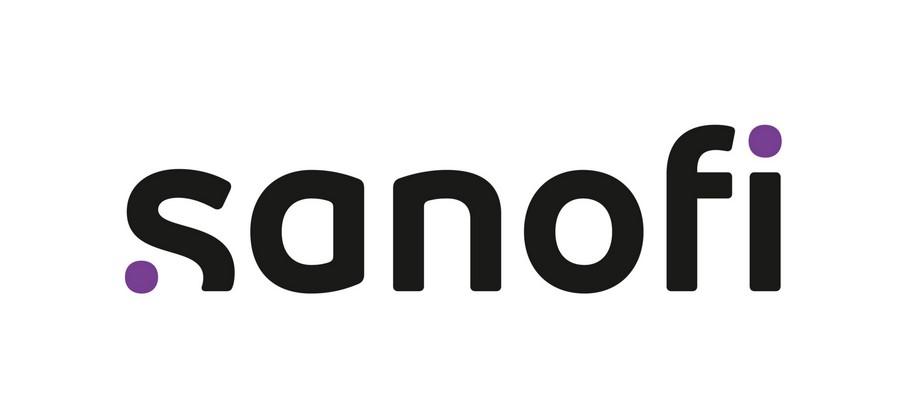
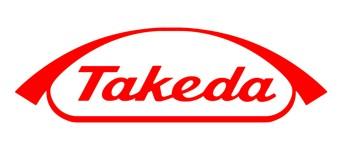

IMF PATIENT AND FAMILY SEMINAR
LOS
ANGELES
FRIDAY AGENDA

Welcome and Agenda Review
Robin Tuohy, Vice President, Patient Support
International Myeloma Foundation
Hot Topics in Myeloma
Joseph Mikhael, MD, MEd, FRCPC, FACP, FASCO
Chief Medical Officer, International Myeloma Foundation
Patient Empowerment: Shared Decision Making
Beth Faiman, PhD, MSN, APN-BC, AOCN®, BMTCN®, FAAN, FAPO
Cleveland Clinic Taussig Cancer Institute
Case Comprehensive Cancer Center, Cleveland, OH
Myeloma 101: The Big Picture Perspective with Q&A
Joseph Mikhael, MD, MEd, FRCPC, FACP, FASCO, Chief Medical Officer, International Myeloma Foundation
BREAK
Navigating Insurance & Medical Bills
Laura Beilke, Esq.
Triage Cancer
Emotional & Physical Wellbeing: Exercise for Myeloma Warriors: Sweating Out More Than Just Your Symptoms
Michaela Hillengass, RN, ACSM-CPT
Roswell Park Comprehensive Cancer Center, Buffalo, NY
Partnering with the IMF
Sylvia Dsouza, Vice President, Development
International Myeloma Foundation
Q&A with Guest Panel
Housekeeping Items
Presentation Slides: Are available by scanning the QR code. Instructions are on the QR code handout on each table.
Program Evaluations: evaluations at the end of the program or on your way out.
Restrooms: Restrooms are located outside the meeting room, either down the stairs from the welcome desk, or on this level: past the welcome desk turn left and the bathrooms are on your left.

Badge Holders: Please return your badge holders and we can recycle them.
We greatly appreciate your time and feedback!


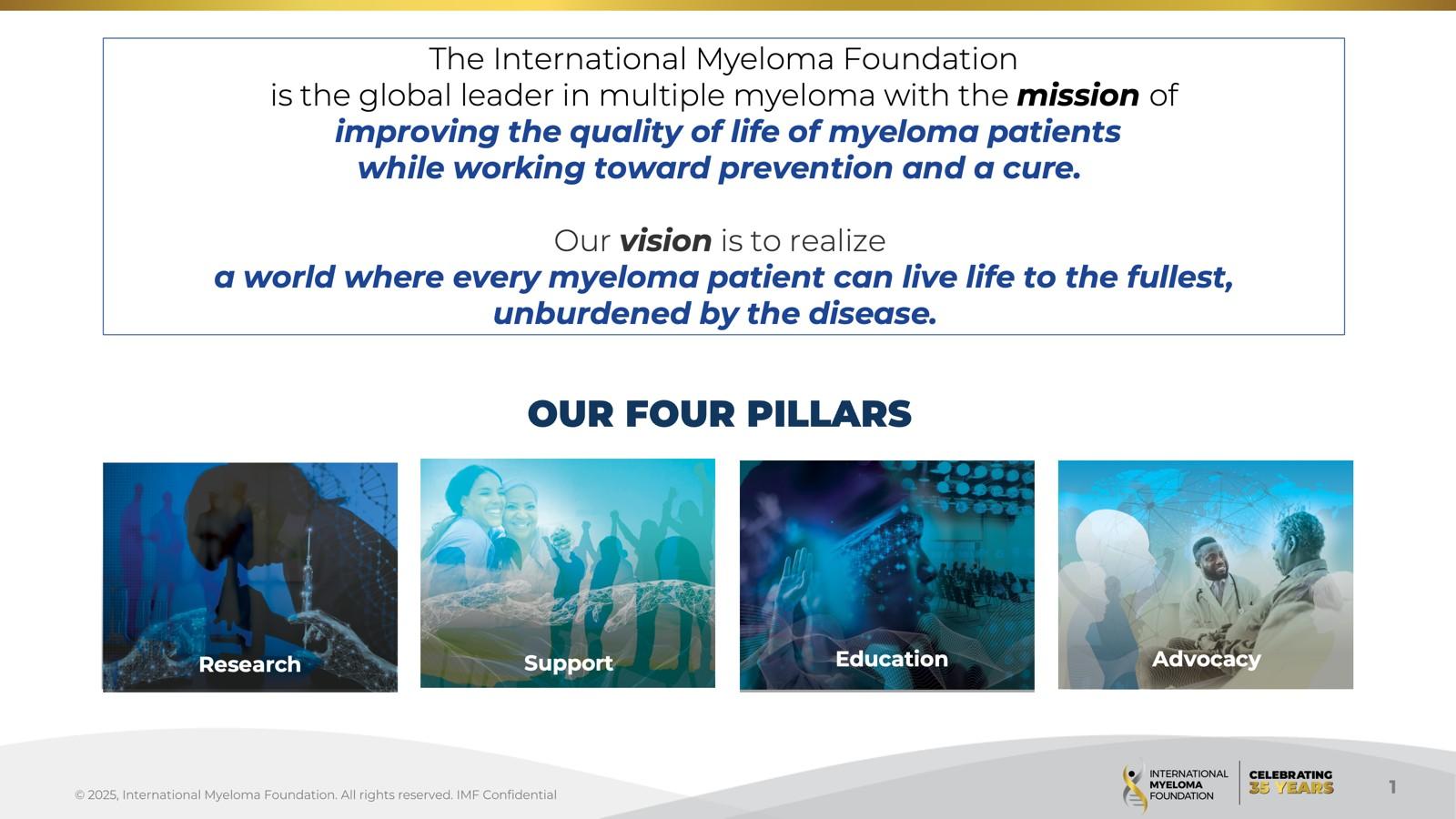

Scientific Advisory Board
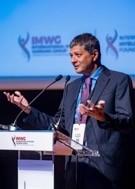

S. Vincent Rajkumar, MD IMF Board Chair


Thomas Martin, MD
UCSF, Helen Diller Family Comprehensive Cancer Center


Wee Joo Chng, MD
National University of Singapore
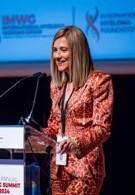

María-Victoria Mateos, MD, PhD University of Salamanca
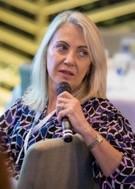

Vania Hungria, MD, PhD Santa Casa de São Paulo


Joseph Mikhael, MD, MEd, FRCPC, FACP IMF Chief Medical Officer


Sigurður Yngvi Kristinsson, MD, PhD University of Iceland


Philippe Moreau, MD University Hospital of Nantes
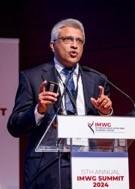

Shaji Kumar, MD Mayo Clinic


NIkhil Munshi, MD Dana-Farber Cancer Institute


Jesús San Miguel, MD, PhD University of Navarra


Sagar Lonial, MD, FACP
Winship Cancer Institute, Emory University


Saad Zafar Usmani, MD, MBA, FACP, FASCO
Memorial Sloan Kettering Cancer Center
The IMF Support Group Team is Here
For You!
Shared Experiences Help to Better Understand the Myeloma Journey
• Support Groups empower patients & care partners with information, insight & hope
• The IMF provides educational support to a network of over 150 myeloma specific groups

150+ US Support Groups
Over 200 Support Group Visits/year
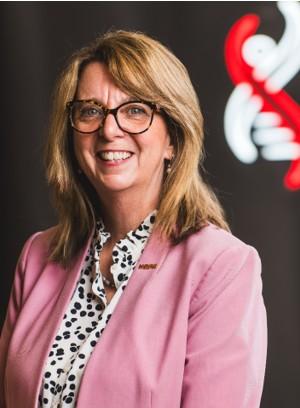






Los Angeles
Meets virtually on the 3rd Saturday of each month at 10:30AM Pacific Time
City of Hope
Meets virtually on the 3rd Wednesday of each month at 3:00PM Pacific Time
Rancho Mirage
Meets in-person on the 1st Thursday of each month at 3:00PM Pacific Time
Inland Empire
Meets hybrid on the 3rd Saturday of each month at 11:00AM Pacific Time
Sacramento
Napa Valley/Sonoma
Meets virtually on the 2nd Friday of each month at 10:00AM Pacific Time


Meets virtually on the 1st Saturday of each month at 10:00AM Pacific Time
San Diego
Meets hybrid on the 2nd Monday of each month at 6:30PM Pacific Time
San Fernando Valley
Meets virtual on the 3rd Wednesday of each month at 7:00PM Pacific Time
Orange County
Meets virtually on the 1st Thursday of each month at 6:00PM Pacific Time
San Francisco Bay Area
Meets virtually on the 3rd Saturday of each month at 10:00AM Pacific Time
San Gabriel Valley
Meets hybrid on the 1st Monday of each month at 6:30PM Pacific Time
Santa Cruz
Meets virtually on the 1st Monday of each month at 4:30PM Pacific Time

Upland
Meets hybrid on the 1st Friday of each month at 10:00AM Pacific Time
Westlake Village/ Thousand Oaks/ Ventura County
Meets virtually on the 2nd Saturday of each month at 11:00AM Pacific Time

Special Interest Groups
Special interest groups are designed as a supplemental support for specific populations of patients, in addition to their local Support Groups
MM Families
Founded in 2021
For patients & care partners with young children
Las Voces de Mieloma
Founded in 2022
For Spanish speaking patients & care partners
Living Solo & Strong
Founded in 2022
For patients without a care partner

Click here for more inf
Smolder Bolder
Founded in 2023
For smoldering myeloma patients & care partners
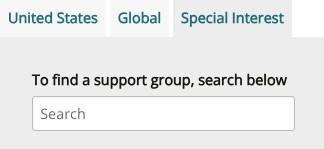
Veterans SIG
Founded in 2025
For those who served our country
High Risk Multiple Myeloma
Founded in 2023
For high-risk myeloma patients & care partners
Care Partners Only
Founded in 2024
For myeloma care partners only
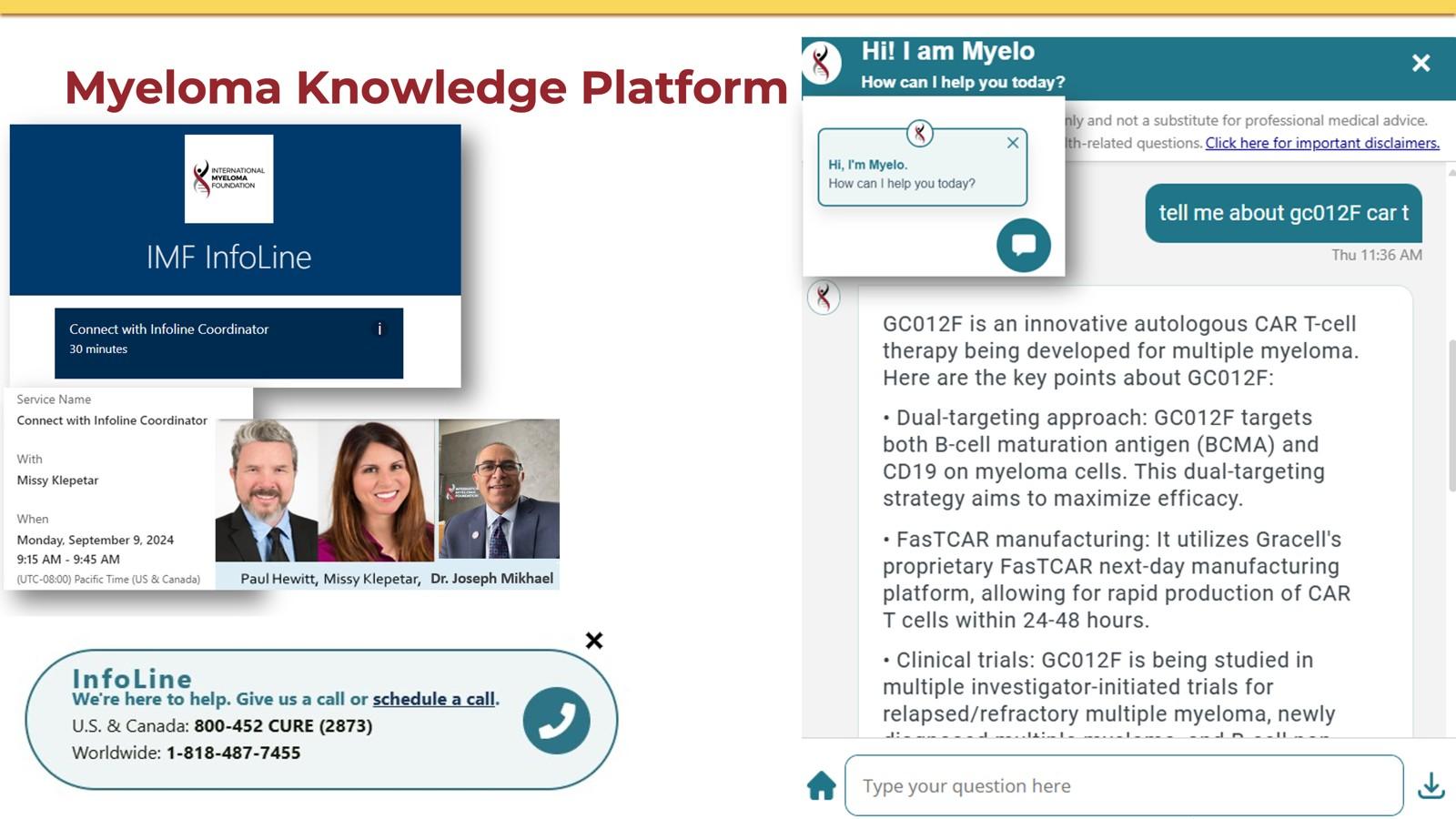
CLINICAL TRIALS MATCHING ENGINE
Seamlessly matching patients to the latest clinical trials.
• Discover clinical trials tailored to your myeloma journey with the IMF.
• Filter by diagnosis, treatment, and location to find the best fit for you.
Clinical Trials Matching Engine Usage





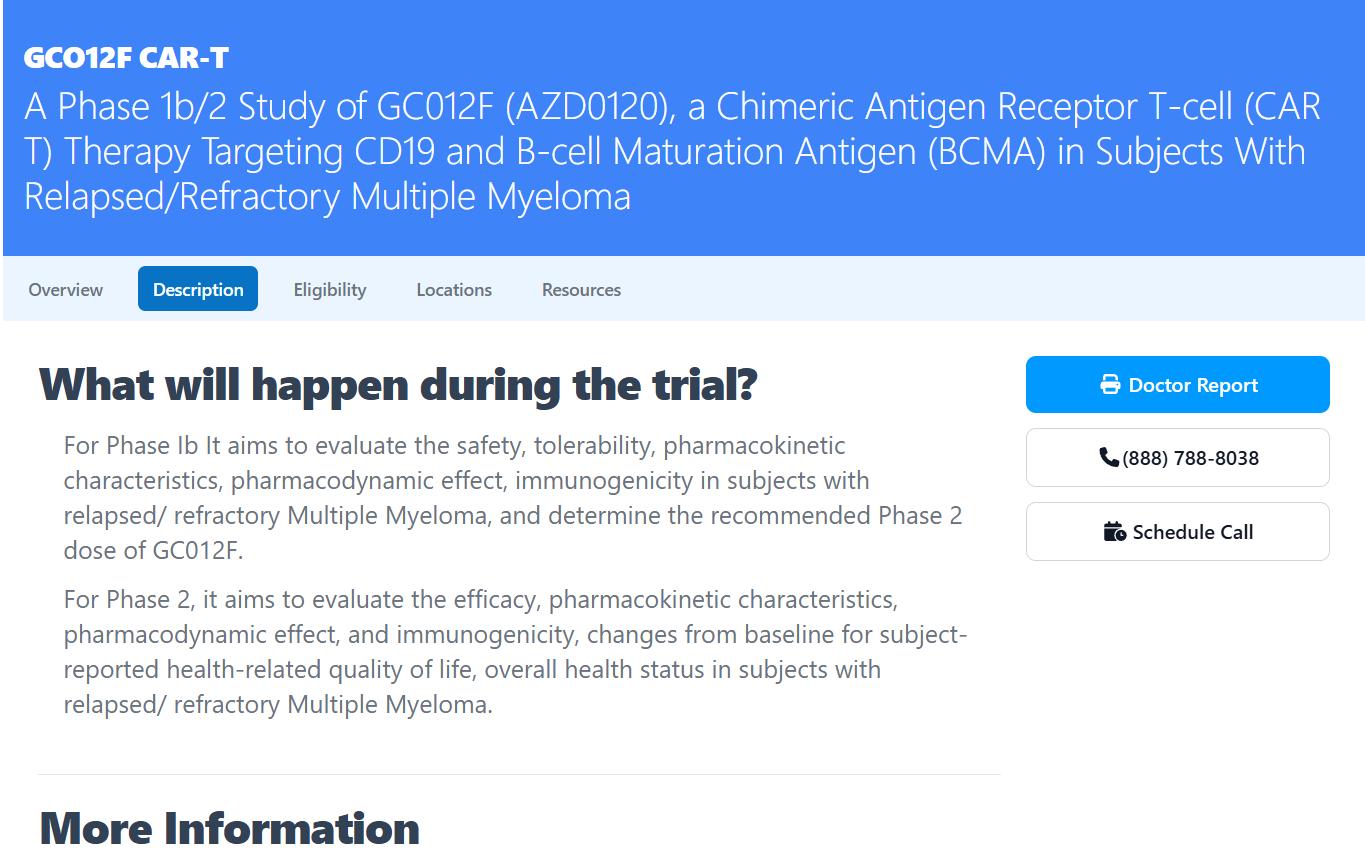





Personalized Clinical Trial Support

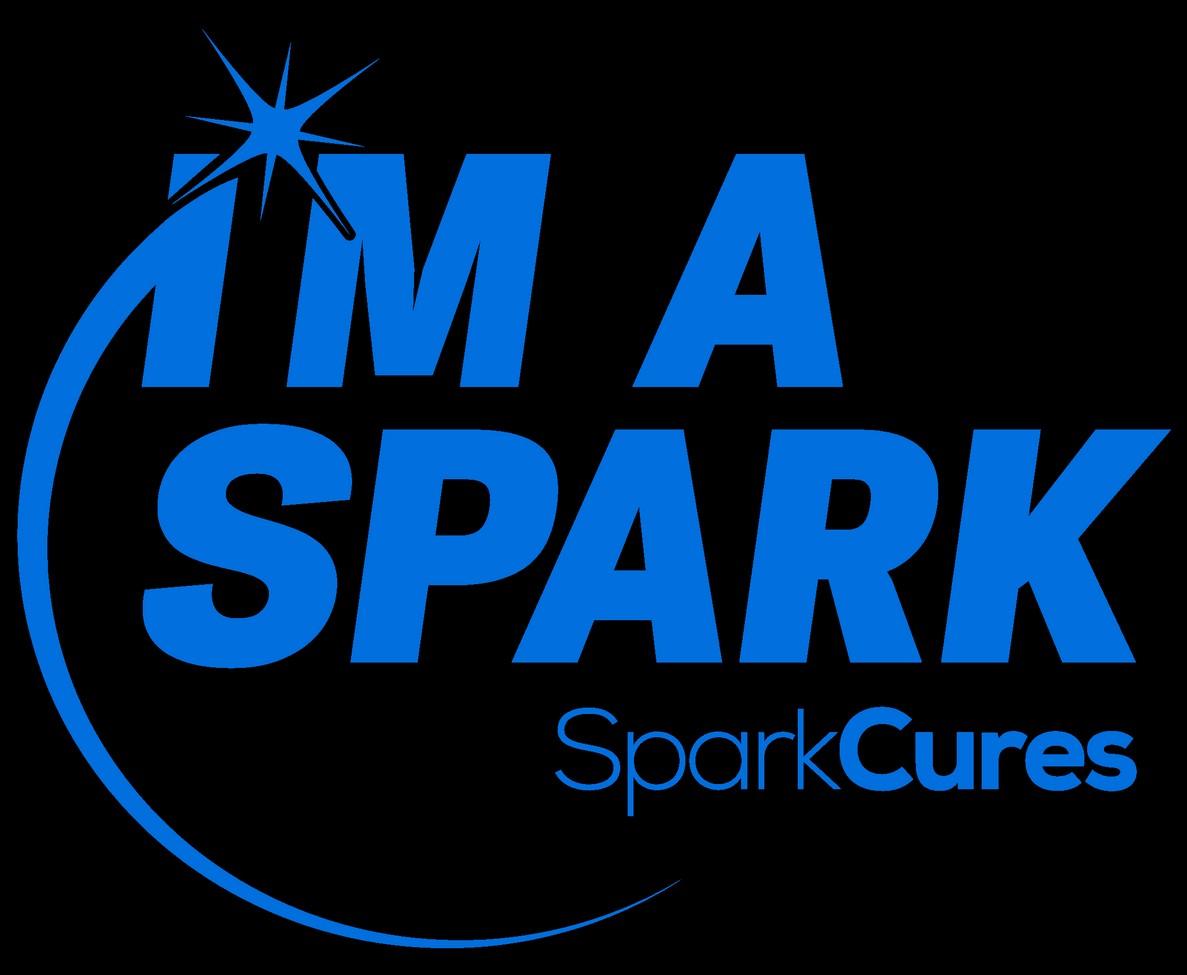


WRITTEN EDUCATION


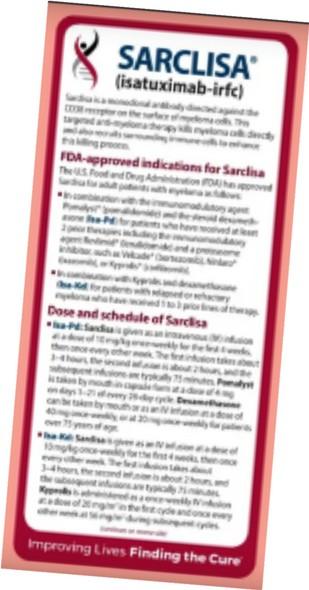






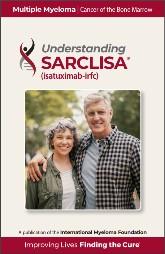


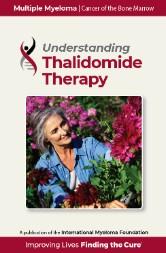
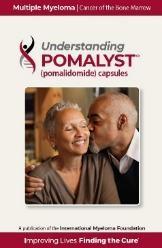
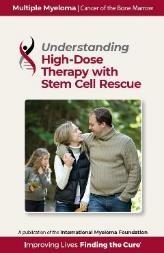

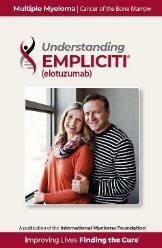


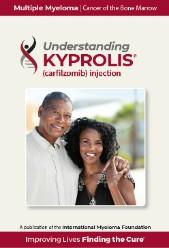
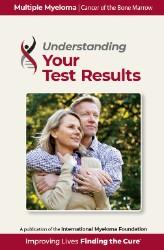

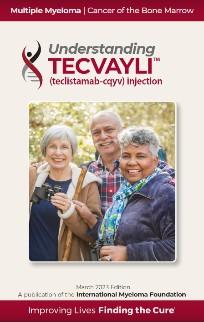










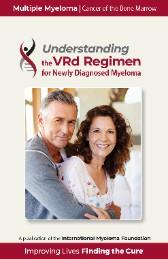



Live Patient Education


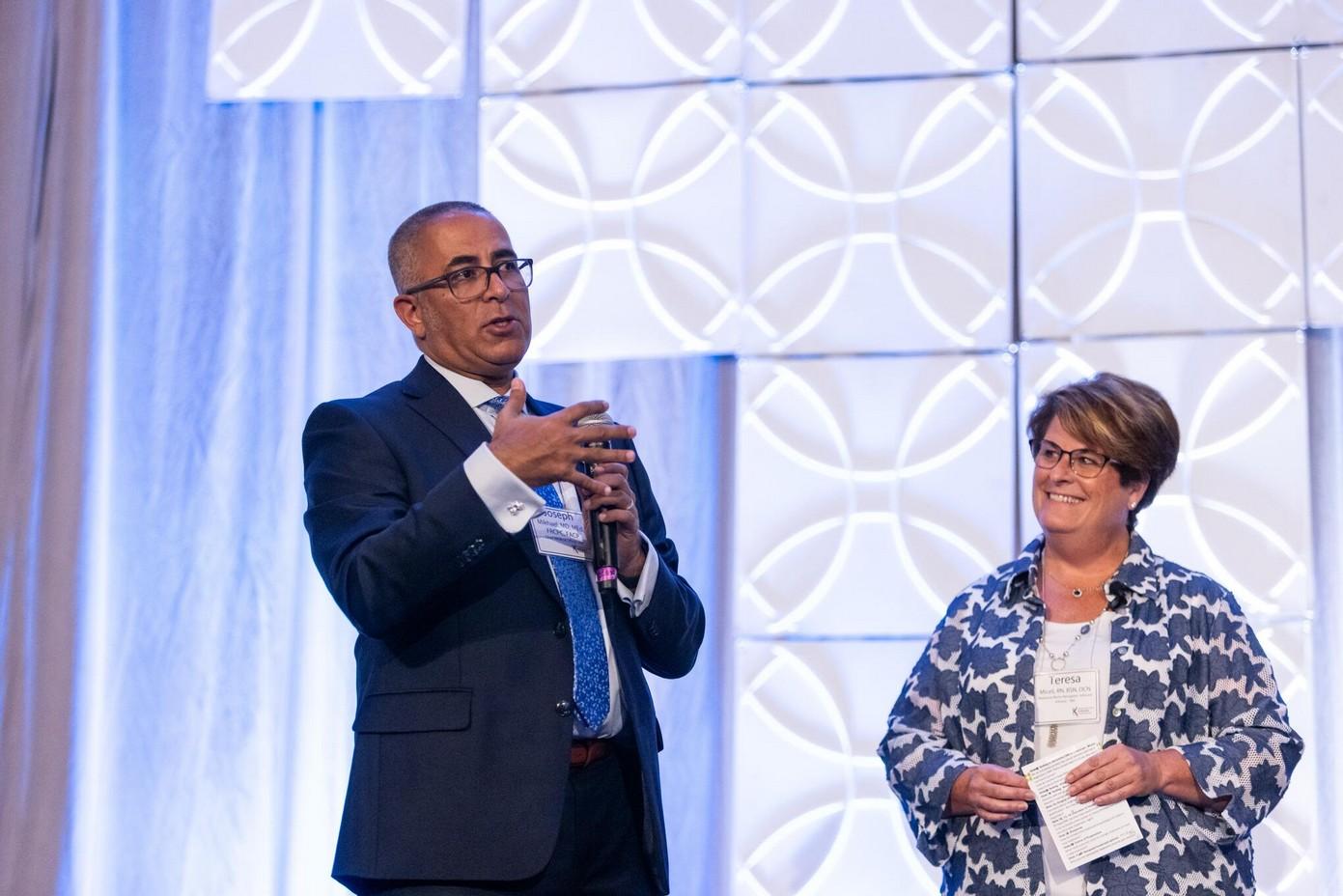

2025 Live Patient Education
Patient & Family Seminars
• Boca Raton, FL – March 14 – 15
• Philadelphia, PA – May 2 – 3
• Los Angeles, CA – August 15 – 16
• Chicago, IL – October 3 – 4

Myeloma Community Workshops
• Virtual - March 4
• San Mateo, CA - March 29
• Atlanta, GA - April 5
• Edina, MN - April 26
• Denver, CO - June 21
• Virtual – July 29
• Seattle, WA - August 9
• Waltham, MA - September 27
• Raleigh-Durham, NC - November 15
• Virtual – November 18
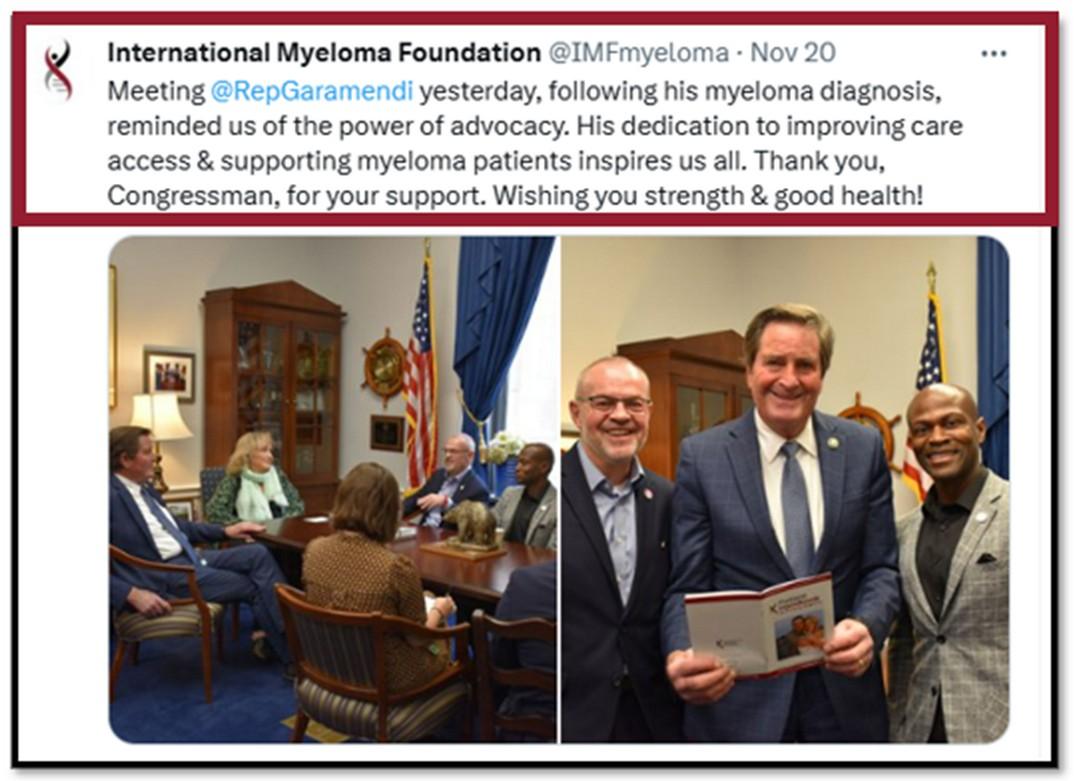
1. Ensure Access to Care: We advocate to ensure all myeloma patients have equitable, comprehensive, patient-centered care without insurance barriers that limit options or delay treatment initiation.
2. Eliminate Financial Barriers: We advocate for policies that allow myeloma patients access to treatments and supportive care interventions without facing financial hardships.
3. Advance Myeloma Research: We advocate for annual appropriations funding for myeloma research and the advancement of clinical trial eligibility and research protocols that ensure representation from diverse populations.
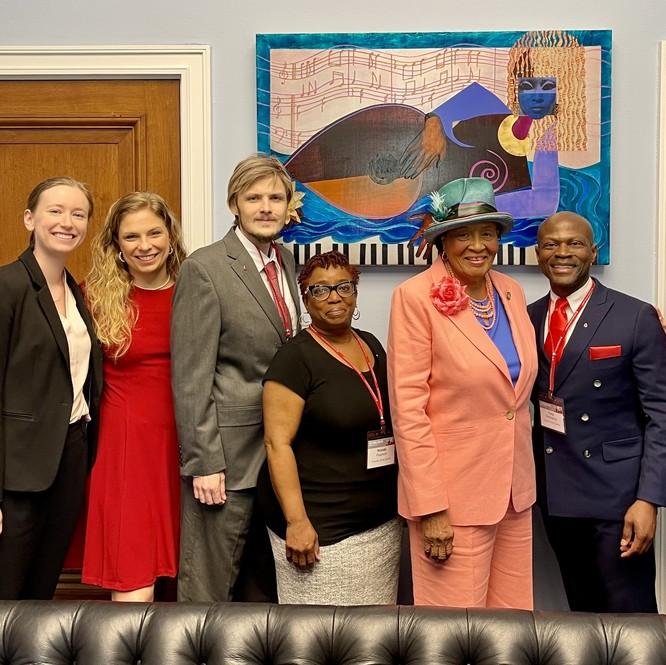
The IMF Grassroots Advocacy Program is multi-faceted and growing
• Advocacy Training & Leadership Development
• Policy and Legislative Education
• Grassroots Campaign Planning
• Health Policy Forums & Roundtables
• Advocacy Resource Development
• Storytelling and Personal Narratives
Scan for Upcoming Programs and Events!




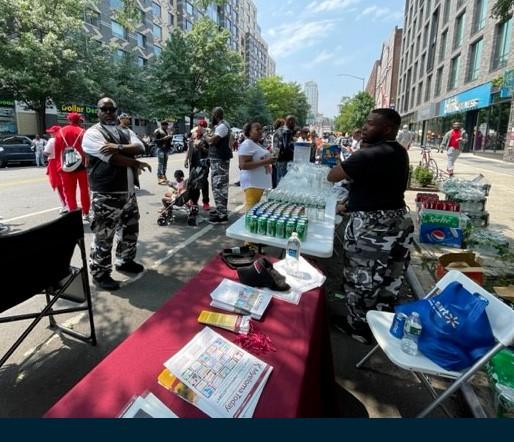

Hot Topics in Myeloma
Joseph Mikhael, MD, MEd, FRCPC, FACP, FASCO Chief Medical Officer, International Myeloma Foundation

Patient Empowerment: Shared Decision Making
Beth Faiman, PhD, MSN, APN-BC, AOCN®, BMTCN®,
FAAN, FAPO
Cleveland Clinic Taussig Cancer Institute
Case Comprehensive Cancer Center, Cleveland, OH

Patient Empowerment: Participating in Shared Decision Making
Beth Faiman PhD, MSN, APRN-BC, AOCN, BMTCN, FAAN, FAPO
Hematology/Oncology Nurse Practitioner Cleveland Clinic Taussig Cancer Institute Cleveland OH


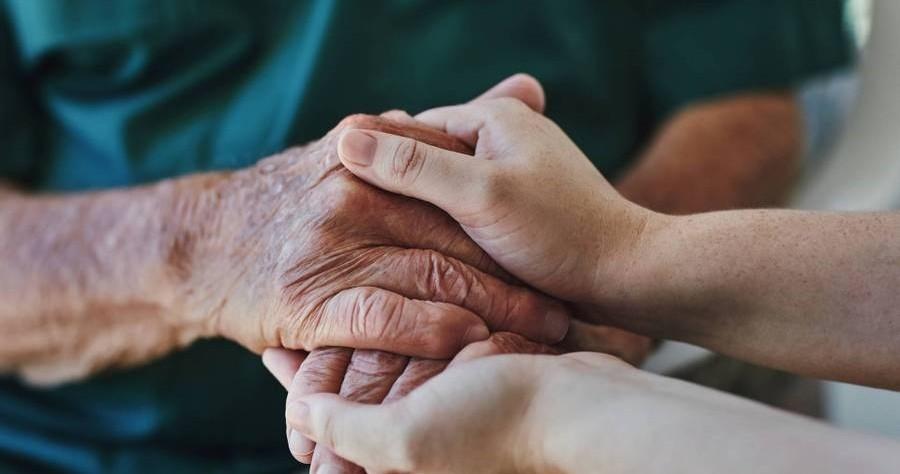

OUR VISION:
A world where every myeloma patient can live life to the fullest, unburdened by the disease.
OUR MISSION:
Improving the quality of life of myeloma patients while working toward prevention and a cure.


Goals
• Review Shared Decision Making (SDM) Concepts
• Identify Influencing Factors To Treatment Decision Making
• Discuss Strategies To Enhance Patient Empowerment & Promote Shared Decision Making


Patient-Centric Care
“The
aim of shared decision making is to ensure that:
• Patients understand their options and the pros and cons of those options.
• Patient's goals and treatment preferences are used to guide

SHARE Steps
Agency for Healthcare Research and Quality (AHRQ)


Faiman , B and Tariman, J. (2019). Shared Decision Making: Improving
NO. 5. Image Credit: https://www.ahrq.gov/health-literacy/professional-training/shared-decision/index.html ; Image:
https://www.ahrq.gov/cahps/quality-improvement/improvement-guide/6-strategies-for-improving/communication/strategy6i-shared-decisionmaking.html#6i1


Steps in the Shared Decision-Making Process
Identify that a decision is needed: The HCP informs the patient that a decision is to be made and that the patient's opinion is important (Choice talk).
Understand the options:
The HCP explains the evidence-based options and their pros and cons. The patient expresses their preferences, and the HCP supports the patient in decision-making (Option talk).
Come to a decision:
The HCP and patient discuss the patient's wish to take part in the decision making and incorporate the patient's values and preferences into the decision (Decision talk).
Follow-up:
Review and evaluate the decision, adjust as needed


Benefits of Shared-Decision Making
Patients, regardless of age, want to be a part of treatment decision-making
Reduces uncertainty and alleviates concerns
Decisions reflect personal and family values and preferences
Requires staying informed
Promotes patient and care partner engagement and sense of empowerment
Positive impact on QOL and continuation on therapy

https://www.ahrq.gov/cahps/quality-improvement/improvement-guide/6-strategies-for-improving/communication/strategy6i-shared-decisionmaking.ht
“The 'efficacy' of treatment means different things to different patients, and treatment decision-making in the context of personalized medicine must be guided by an individual's composite definition of what constitutes the best treatment choice.” Terpos, et al.



Factors That Influence Shared-Decision Making
Disease-Derived
Biology: Risk stratification, Urgent intervention needed vs time to consider options

Patient-Derived
Treatment: Availability/access, effectiveness, toxicity, current research

Understanding complex treatment options
Physical and emotional wellness
Comfort in speaking up “Doctor knows best”
Financial, Cultural and Religious factors
Care partner & social network, transportation


Provider-Derived
Time limitations
Support for patient involvement
Provider bias and preference
https://www.ahrq.gov/cahps/quality-improvement/improvement-guide/6-strategies-for-improving/communication/strategy6i-shared-decisionmaking.ht
ml#6i1 https://www.valueinhealthjournal.com/action/showFullTableHTML?isHtml=true&tableId=tbl4&pii=S1098-3 015%2822%2900198-X


STRATEGIES FOR PATIENT EMPOWERMENT & SHARED DECISION MAKING

Strategies: Stay Informed

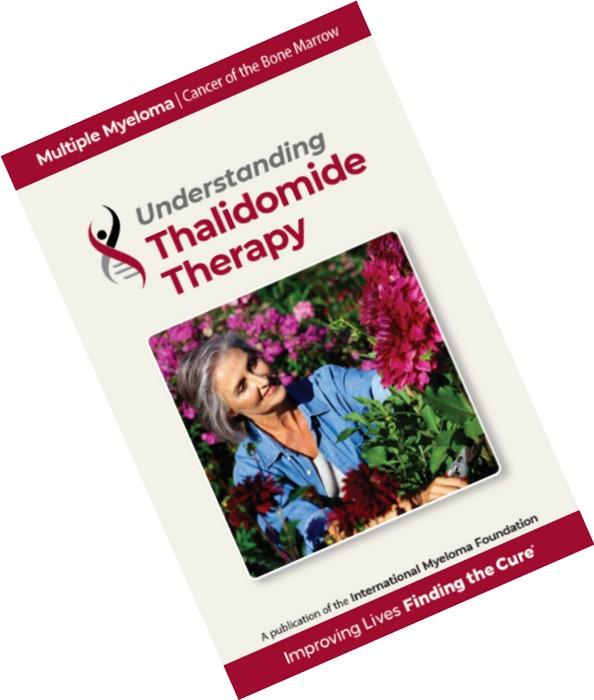
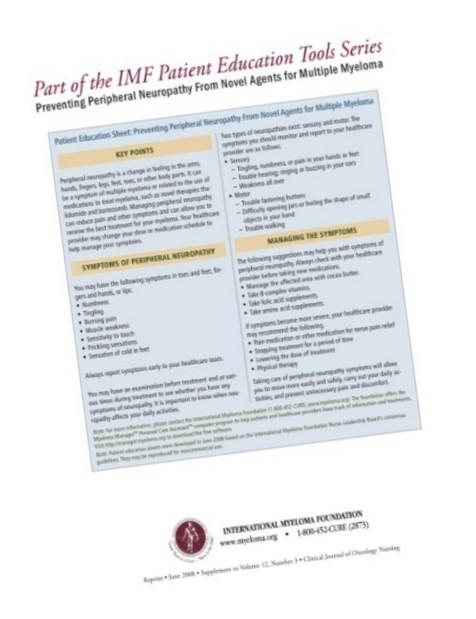


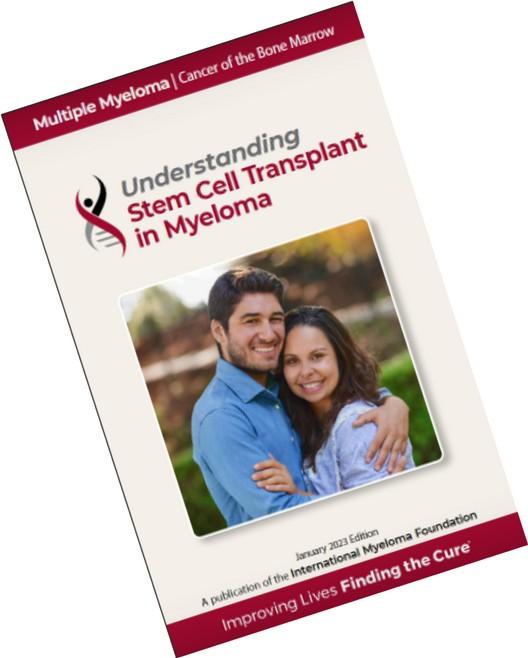




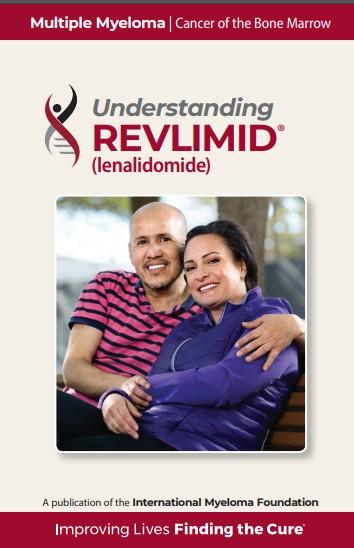


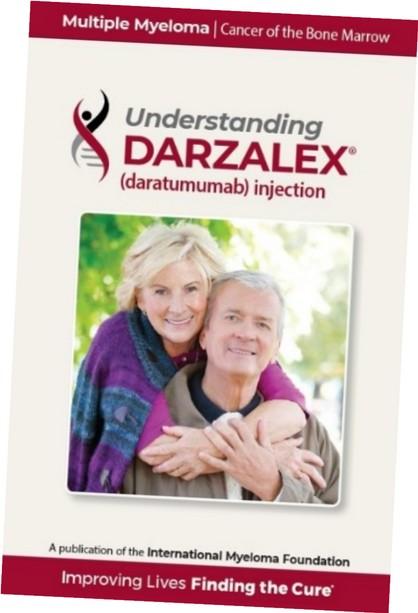






Seek Information, Understand your options
Use caution considering stories of personal experiences
Your healthcare team members are resources
Use reliable and current sources of information
IMF Website: http://myeloma.org
• Publications
• Videos and Replays
• Future Events, both in-person & virtual
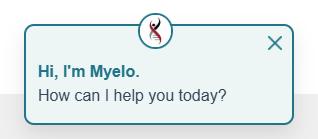
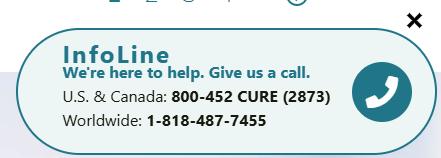


BE INVOLVED IN YOUR CARE
Be empowered to be part of the treatment decision-making, come prepared with questions
• Ask for time to consider options (if needed/appropriate)
• Understand options; consider priorities
• Use reliable sources of information
• Use caution considering stories of personal experiences
• Consider your goals/values/preferences
• Express your goals/values/preferences; create a dialog
• My top priority is [goal/value]; additional [preferences] are also important.
• I think [treatment] may be a good choice given my priorities… What do you think?
• Arrive at a treatment decision together
• Arrange follow up to review and adjust the plan, if needed

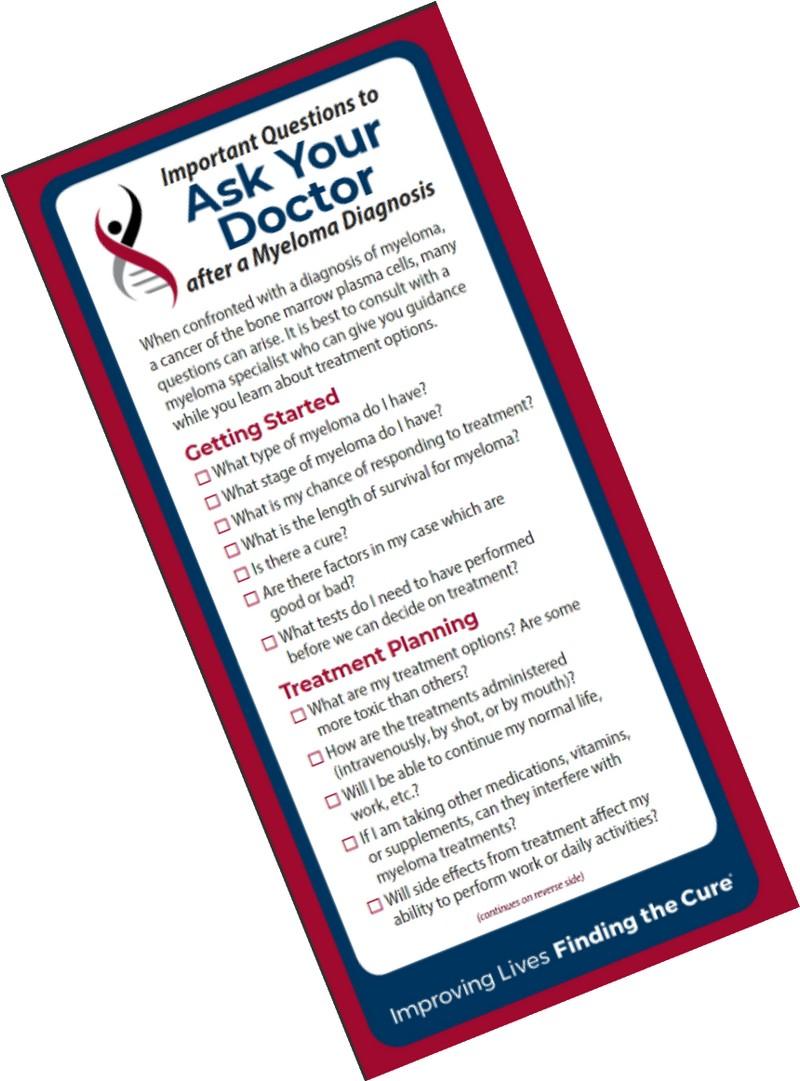





Strategies: Know The Members Of Your Team

Understand their different roles
Myeloma specialist and General Heme/Onc
Primary care: for health screening, general check ups, vaccinations
Sub-specialists: specialty needs
Stay
connected
Keep a contact list of your providers
Know who to contact for more information


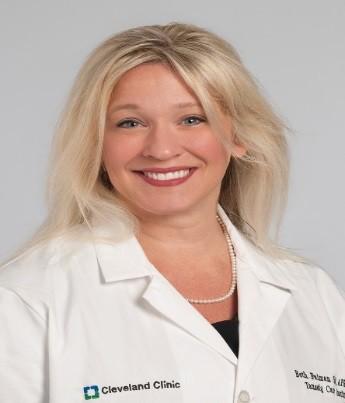





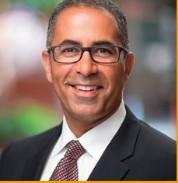



Strategies: Prepare for Medical Visits
Prepare

Medications: Bring a current list of prescribed and over-thecounter
Questions: Prioritize questions & concerns including financial issues
Paperwork needing medical signature (ex FMLA, prior authorizations)
Inform
Updates: Medical or life changes since your last visit
Symptoms: How have they changed (improved, worsened, stable)? Keep a symptom diary. Bring it along
Communicate effectively so your health care team can help
Follow Up
“Next Steps”: Future appointments, medication changes, plan of care. Ask for the information in writing or on your patient portal
Include a care partner, especially for pivotal appointments


Strategies: Prepare for Tele-Health Visits

Check with your healthcare team –
Is telemedicine an option?
What is the process and what technology is needed?
Are labs needed in advance? Do you need an order?
Preparation is similar for “in-person” appointment PLUS:
Location: quiet, well-lit location with strong Wi-Fi is best
Yourself: Do you need to show a body part - wear accessible clothing
Vital signs (blood pressure, temp, heart rate, weight) selfserve blood pressure cuff is available at many pharmacies and for purchase
Include a care partner, especially for pivotal appointments


Create a Care Network

Care partners assist in many ways

Myeloma causes the highest burden of symptoms, most commonly effecting people of older age with other medical issues. Care partner support is valuable in SDM

Attending medical appointments, being present to learn and discuss possible treatment options and alert the medical team of side effects to treatment
Some treatment options available only if care partner support exists
Care partners can be one person or a rotation of many people
Building a partnership is based in good communication
Finding the balance:


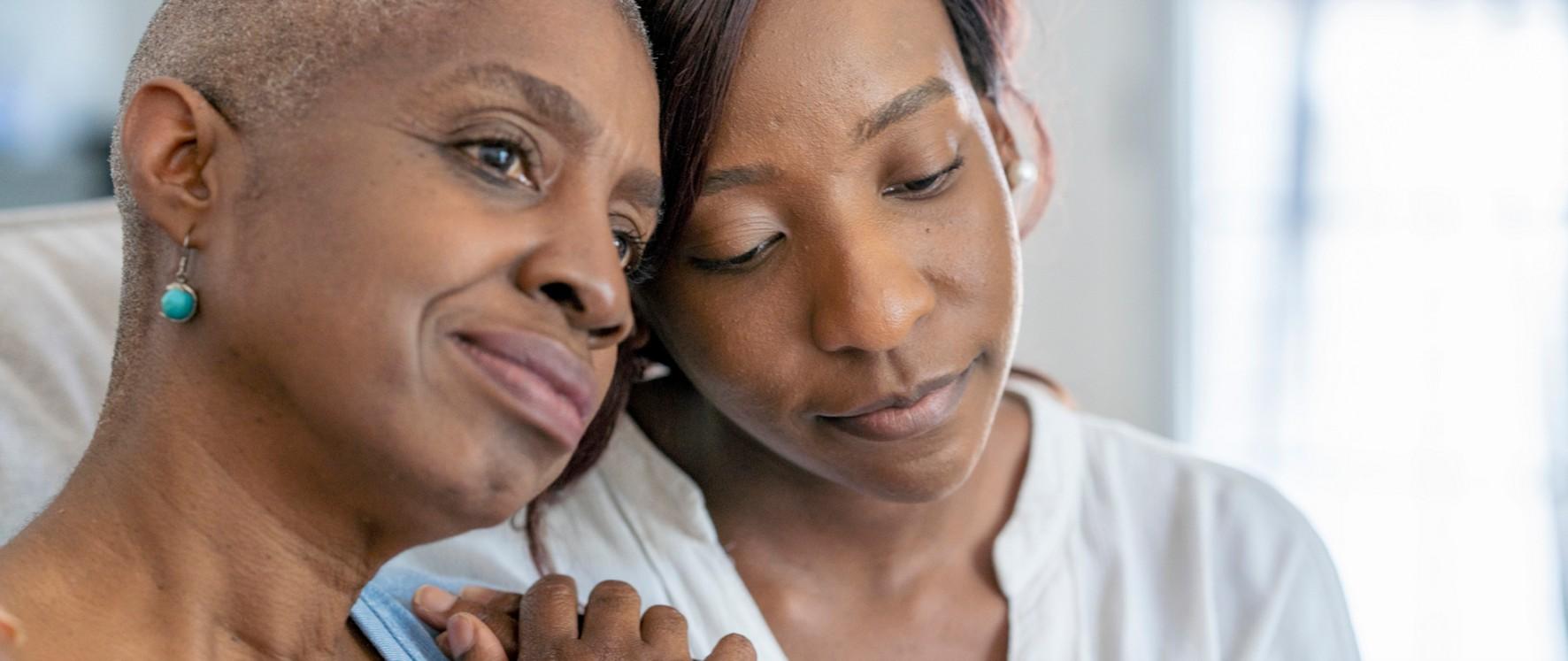
- helping the patient with needed activities while maintaining a sense of independence
- allowing the care partner to have time for good self-care



Key Take-Aways and Things to Think About

Over the next two days:
Evaluate where you are at in the process (What decisions need to be made?)
Absorb the information being presented (What are the options?)

Consider how the information impacts you and your family (What are your preferences?)
Create questions that will lead to better understanding (What more do I need to know before making a decision?)
Be an active member of your health care team
Shared Decision Making



Myeloma
101: The Big Picture Perspective with Q&A
Joseph Mikhael, MD, MEd, FRCPC, FACP, FASCO, Chief Medical Officer, International Myeloma Foundation
MM101: The Big Picture Perspective

Joseph Mikhael, MD, MEd, FRCPC, FACP
• Professor, Applied Cancer Research and Drug Discovery, Translational Genomics Research Institute (TGen), City of Hope Cancer Center

Teresa S. Miceli RN BSN OCN
Mayo Associate, Assistant Professor of Nursing

• Chief Medical Officer, International Myeloma Foundation
• Consultant Hematologist and Director, Myeloma Research, Phase 1 Program, HonorHealth Research Institute
• Adjunct Professor, College of Health Solutions, Arizona State University
Myeloma Research RN Navigator, Mayo Clinic, Rochester, MN
International Myeloma Foundation
InfoLine Advisor, Nurse Leadership Board, Support Group Leader
NCI Myeloma Steering Committee


How common is Myeloma in the US?










What Causes Myeloma? How/Why Did
I Get This?
Environmental Factors:
• Exposure to some chemicals
• Radiation exposure
Examples:
Agent Orange
Burn pits
Pesticides, Herbicides
Firefighter/First Responder exposures
Individual Factors:
• Age
• Family History of related disorders
• Personal History of MGUS or SMM
• Obesity
VA Study Documents Health Risks for Burn Pit Exposu
res
Leukemia and Multiple Myeloma Set to Be Added to List of Conditions Linked to Burn Pits
In most cases, the honest truth
WE DON’T KNOW



What is the Connection Between Bone Marrow & Myeloma ?
Hematopoietic stem cell
Red Blood Cells Carry Oxygen White Blood cell Fight Infection Platelets Prevent Bleeding






Photo Credit
Understanding (Mono)clonal Plasma Cells

Heavy Chain: G, A, M, D, E




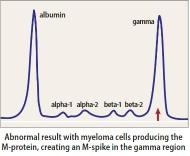
Chain = M-Spike

65% IgG – most common
20% IgA – associated with AL Amyloid
5%
Less common: IgD, IgE, IgM
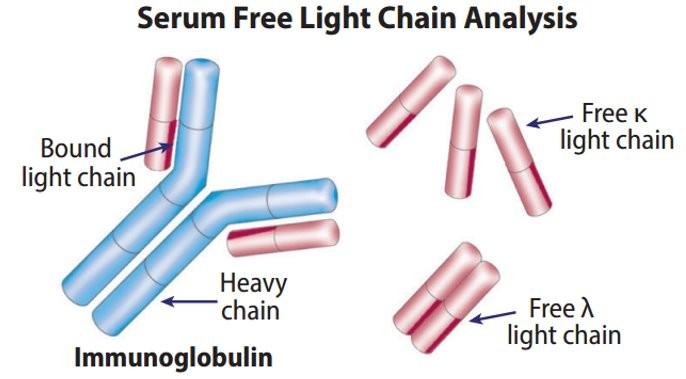


• AL-Amyloid
Is Myeloma the Only Protein Disorder?
• POEMS
• Light or Heavy Chain Deposition Disease
• MGCS = Clinical
• MGRS = Renal
• MGNS = Neuro

Condition
Clonal plasma cells in bone marrow
Likelihood
Myeloma
MGUS1-4
(Monoclonal Gammopathy of Undetermined Significance)
SMM1-5,8 (Smoldering Multiple Myeloma) Active Multiple Myeloma6-8
* In clinical trial

Multiple
Myeloma and Myeloma Defining Events




Testing For Myeloma: Blood & Urine
Test Name
CBC + differential
Complete metabolic panel
Beta-2 Microglobulin (B2M)
What it means
Hemoglobin, WBC, Platelets
Creatinine, Calcium,
Albumin, Liver function
Lactate Dehydrogenase (LDH) Part of staging and risk stratification
Serum Immunofixation and
Protein electrophoresis (SPEP+IFE)
Immunoglobulins (G, A, M, D, E)
Free light chain assay with kappa/lambda ratio
Urine immunofixation & protein electrophoresis (UPEP+IFE)
Measures the level of normal and clonal protein Identifies the type of clonal protein

Measures the level of normal and clonal protein Identifies the type of clonal protein

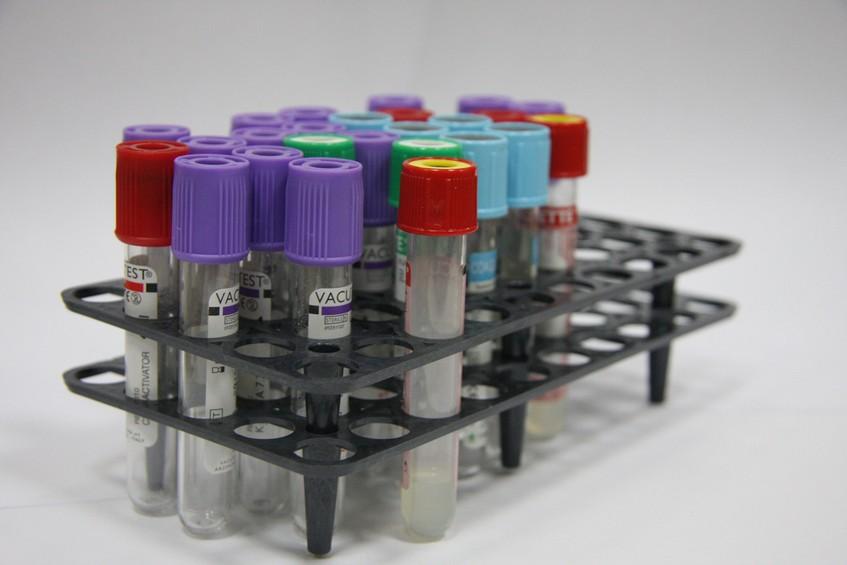


This Photo by Unknown Author is licensed under CC BY-SA-NC

Testing For Myeloma: Imaging
Imaging:
– Skeletal survey: Series of X-rays; less sensitive than other techniques
– Whole body low dose (CTWB-LD CT )
– Positron Emission Tomography (PET/CT)
– Magnetic Resonance Imaging (MRI)

Healthy bone versus myeloma bone disease

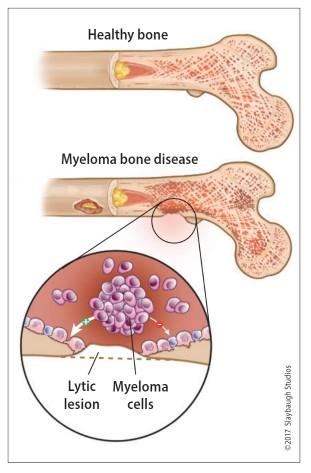
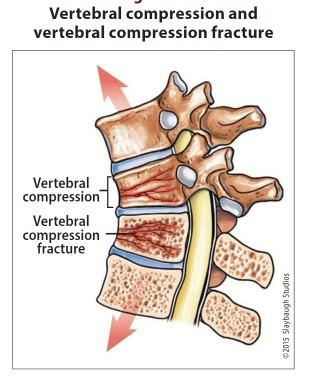

This Photo by Unknown Author is licensed under CC BY-NC-ND

Testing For Myeloma: Bone Marrow
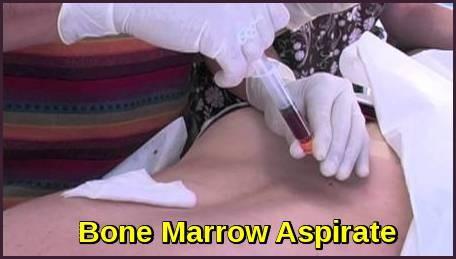

Bone marrow genetics
• Cytogenetics
• Fluorescence in situ hybridization (FISH)
• Next generation sequencing (NGS)




What is the Myeloma Treatment Landscape?
Initial Therapy (a.k.a. Frontline, Induction)
HD-Melphalan + Stem Cell Transplant (ASCT)
Quad Therapy (ex. CD38+ MoAb + VRd) Consolidation Therapy
Maintenance
Treatment for Relapse
Supportiv
e Care and Living Well



Drug Class Overview

(thalidomide)
(lenalidomide)
(pomalidomide)


Drug Class Overview

Peptide Drug Conjugate* Pepaxto (Melphalan
BCMA Targeted Antibody Drug
Conjugate (ADC)*
Bispecific Antibodies
Blenrep (belantamab mafodotin-blmf)
Abecma (idecabtagene vicleucel)
Carvykti (ciltacabtagene vicleucel)
Tecvayli (teclistimab)
Talvey (Talquetamab)
Elrexfio (Elranatamab)
Cevostamab, Iberdomide, Mezigdomide, Venetoclax Linvoseltamab, LCAR-B38M, ABBV-383 ……………………………

Measuring Disease Response: IMWG Response Criteria
























Negative by next generation flow (NGF) (minimum sensitivity 1 in 10-5 nucleated cells or higher)*
mCR AND normal Free Light Chain ratio, Bone Marrow negative by flow, 2 measures
CR AND negative PCR
Complete Response: Negative immunofixation (IFE); no more than 5% plasma cells in BM; 2 measures
Very Good Partial Response: 90% reduction in myeloma protein
Partial Response: at least 50% reduction in myeloma protein
Minimal Response
Stable Disease: Not meeting above criteria
Progressive Disease: At least 25% increase in identified myeloma protein from lowest level
MRD = Minimal Residual Disease
sCR = Stringent Complete Response; BM = Bone Marrow


When Do I Need A New Treatment?
• Not every relapse requires immediate therapy
• Each case is different
Asymptomatic high-risk disease or rapid doubling time or extensive marrow involvement
Symptomatic or extramedullary disease
Initiate Treatment
Asymptomatic biochemical relapse on 2 consecutive assessments
Consider Observation Monitor Carefully Consider Treatment
Patient-/Disease-Specific Monitor Carefully


Targets on the Myeloma Cell Surface and Therapeutic Antibodies

Bi-Specific Antibodies
Talvey (Talquetamab) CAR-T





Antibody Drug
Empliciti (Elotuzumab)
Bi-Specific Antibodies


Bi-Specific Antibodies CAR-T


Monoclonal Antibodies
Daratumumab and Darzalex Faspro
Sarclisa (Isatuximab)
TAK-079 MOR202
Immune Therapies
Abecma (Ide-cel CAR-T)
Carvykti (Cilta-cel CAR-T)
Tecvayli (Teclistamab)
Elrexfio (Elranatamab)


Other CAR-Ts
Other Bi-Specific Antibodies





How it works:
An antibody directed at a target (BCMA) combined with a cytotoxic agent (chemotherapy) Blenrep(belantamabmafodotin)combinations
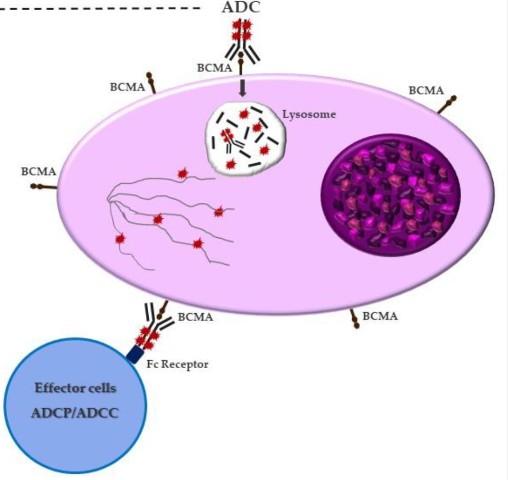
ADC = Antibody-Drug Conjugate
BCMA = B-Cell Maturation Antigen
ADCP/ADCC = Antibody-Dependent Cellular Cytotoxicity & Phagocytosis
Image Credit: https://creativecommons.org/licenses/by-nc/3.0/


Bispecific Antibodies: Mechanism of Action
• Incorporates 2 antibody fragments to target and bind both tumor cells and T cells
• Brings target-expressing MM cells and T cells into close proximity, enabling T cells to induce tumor-cell death


Targets of Bispecific Molecule Vary
“Off the Shelf” Advantage
• No manufacturing process, unlike CAR T-cell therapy (but like ADC/belantamab therapy)
• Thus, no delay between decision to treat and administration of drug
ADC = Antibody-Drug Conjugate; BCMA = B-Cell Maturation Antigen; CD3 = Cluster of Differentiation 3; FcRH5 = Fc receptor-homolog 5; GPRC5D = G-protein coupled receptor family C group 5 member D


The Process of CAR T Cell Therapy




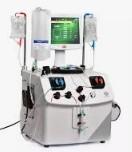


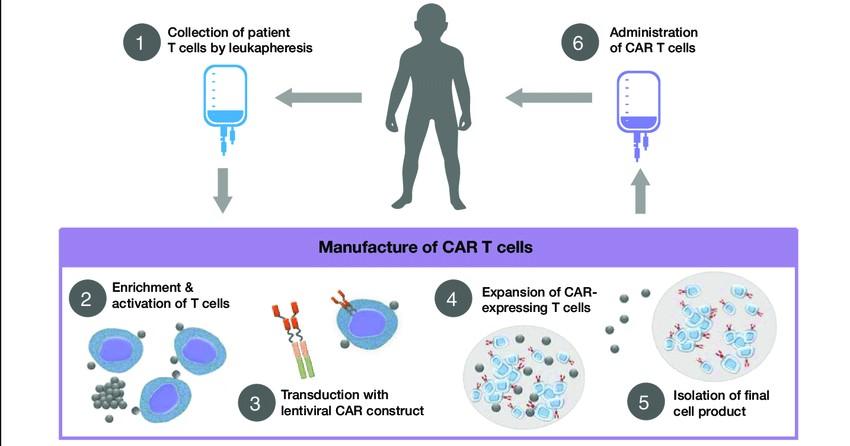





What about Disease Control and Cure in Myeloma?


Requiring Treatment Stable or Unmeasurable Disease, Receiving Treatment Control is the immediate priority with active disease Cure remains the overall goal
Defining “Cure” has many considerations: Minimal Residual Disease Negative (MRD-)
Time Off Therapy Functional Cure
Unmeasurable Disease, Receiving No Treatment Active Disease


The Evolution of Myeloma Therapy
VD
Rev/Dex
CyBorD
VTD
VRD
KRD
D-VMP
DRD
ASCT
Tandem ASCT (?)
Nothing
Thalidomide?
Bortezomib
Ixazomib
Lenalidomide
Combinations
D-VRD
Isa-VRD
D-KRD
Isa-VRD “More” induction?
Daratumumab?
Carfilzomib?
Lenalidomide + PI
Bortezomib
Panobinostat
Lenalidomide
Carfilzomib
Daratumuma b
Pomalidomide
Selinexor
Belantamab
mafodotin*
Melphalan
Ixazomib
Elotuzumab
Isatuximab
Idecabtagene autoleucel
flufenamide*
Ciltacabtagene autoleucel
Teclistamab, Talquetamab
Elranatamab
ASCT, autologous stem cell transplant; CAR, chimeric antigen receptor; Cy, cyclophosphamide; d- daratumumab; D/dex, dexamethasone; isa, isatuximab; K, carfilzomib; M, melphalan; PD-L1, programmed death ligand-1; PI, proteasome inhibitor; Rev, lenalidomide; V, bortezomib.
Speaker’s own opinions.
CAR T Cell Therapy
Bispecific/Trispecific Antibodies
Cell Modifying Agents
Venetoclax
PD/PDL-1
Inhibition?
Small Molecules
* These agents are currently off the market but available through special programs
Anito-cel
Cevostomab
Linvoseltamab
Iberdomide, Mezigdomide
Sonrotoclax



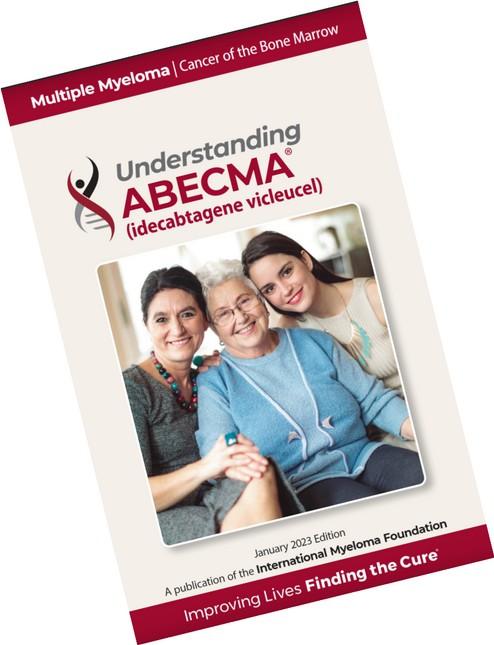


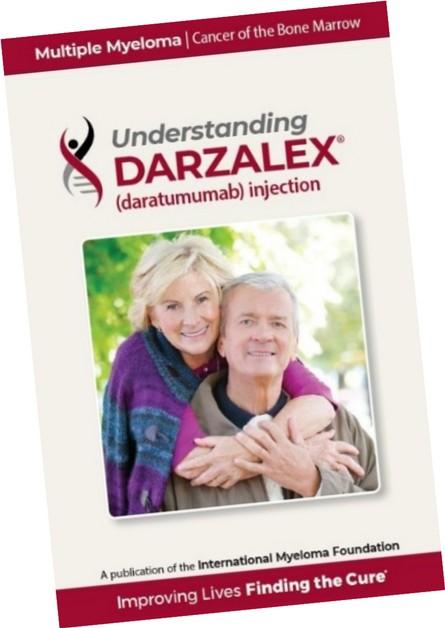

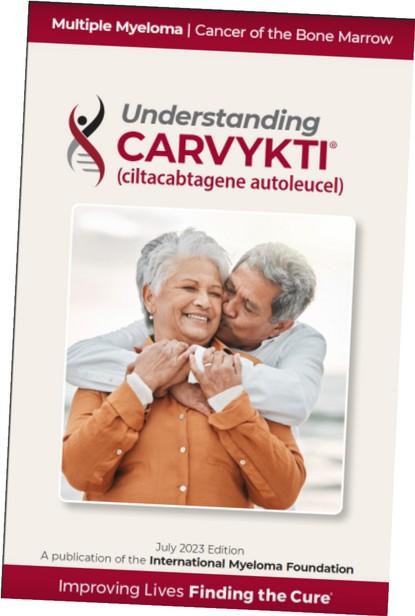



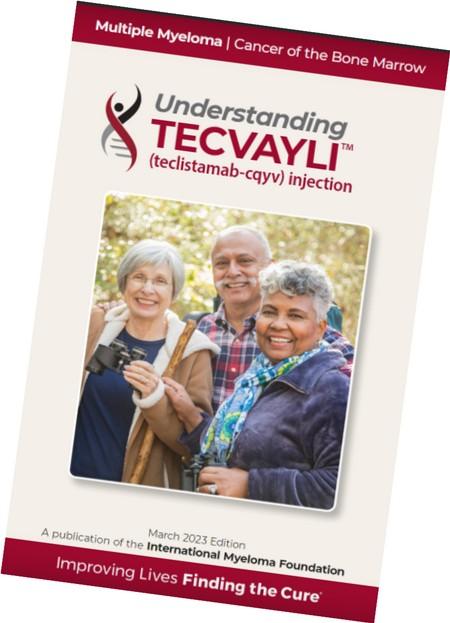


https://seer.cancer.gov/statfacts/html/mulmy.html;





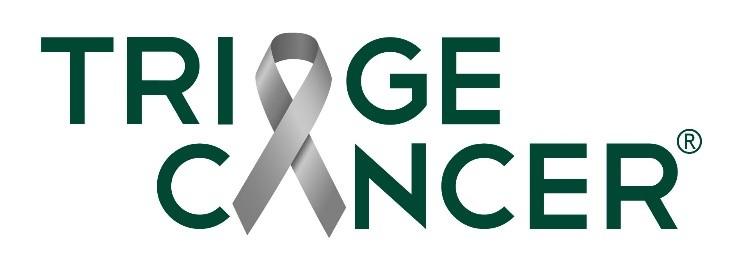
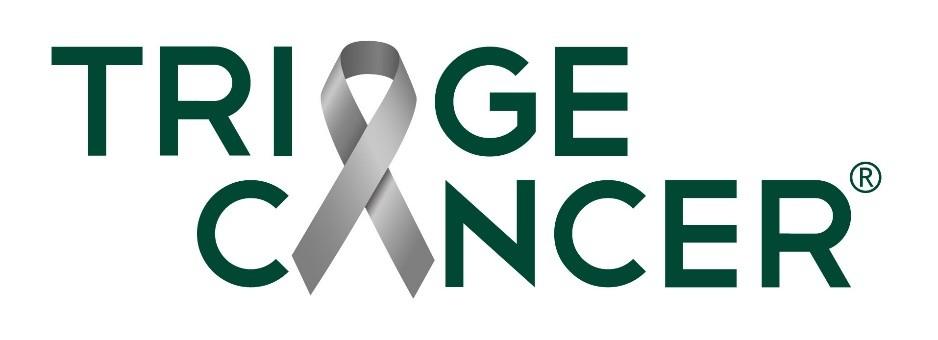
Navigating Insurance & Medical Bills
Laura Beilke, Esq. Staff Attorney, Triage Cancer
This presentation provides general information on the topics presented. The authors and presenters are not engaged in rendering any legal, medical, or professional services by its presentation or distribution. Although this content was reviewed by a professional, it should not be used as a substitute for professional services.
No part of this presentation may be reproduced, distributed, or transmitted in any form or by any means, without the prior written permission of the author, except properly attributed, noncommercial uses permitted by copyright law. For permission requests, contact the authors at info@triagecancer.org

About Triage Cancer
Triage Cancer is a national, nonprofit organization that provides free education on the legal and practical issues that may impact individuals diagnosed with cancer and their caregivers.


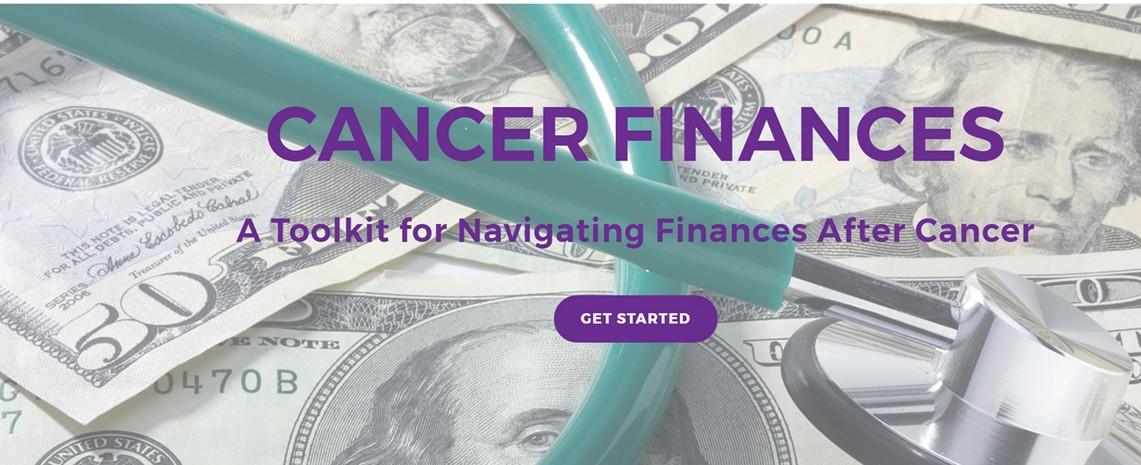
TriageCancer.org
Educational Events
Triage Cancer Conferences
Live & Recorded Webinars
CancerFinances.org
Quick Guides & Checklists
Animated Videos


State Resources & Chart of State Laws
Legal & Financial Navigation Program




Don’t
Understand Health Insurance?
You Are Not Alone.

Source: 2017 PolicyGenius Health Literacy Survey

Cost to Have Health Insurance
• Premium: each month (fixed $ amount)
Terms: Costs
Costs When You Use Health Insurance
• Deductible: each year (fixed $ amount)
• Co-Payment: each time you get care (fixed $ amount)

• Co-Insurance / Cost-Share: each time you get care (%)
• Out-of-Pocket Maximum (fixed $ amount):

Dan’s Plan: Deductible = $2,000
Co-insurance = 80/20 plan
OOP Max = $8,000
Meet Dan
If Dan has a $102,000 hospital bill, what does he pay?
1. His deductible of $2,000
$102,000-$2,000 = $100,000 left
2. His co-insurance amount of 20%
20% of $100,000 = $20,000

But OOP max is $8,000. So, he would only pay the $2,000 deductible + $6,000 of the $20,000 co-insurance amount, for a total of $8,000.

Out-of-Pocket Maximums
Details . . .
There may be a separate out-of-pocket maximum for out-of-network services
Individual vs. Family Plans
• e.g., Individual $5,000 and Family $10,000
Marketplace Plans
• Out-of-pocket max = deductible + co-payments + co-insurance (medical care & drugs)
Some Employer Plans
• Doesn’t include deductibles
• Out-of-pocket max = co-payments + co-insurance
• Doesn’t include deductibles or co-payments
• Out-of-pocket max = co-insurance
• Doesn’t include prescription drugs
• Separate out-of-pocket max for prescription drugs = co-payments + co-insurance



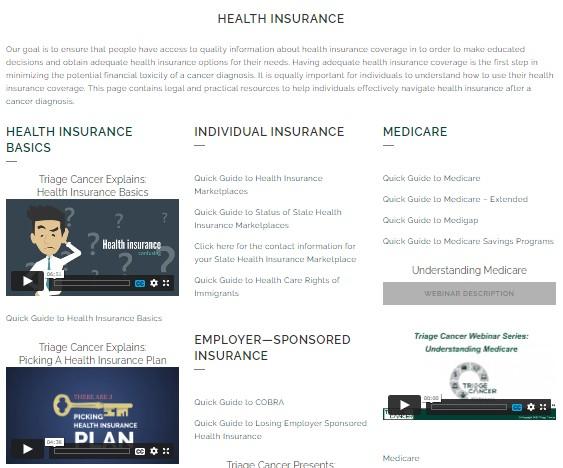

Comparing Plan Options


$200 x 12 = $2,400 + $8,000 = $10,400
Total costs for year = (monthly premium x 12) + OOP max $275 x 12 = $3,300 + $6,000 = $9,300 $400 x 12 = $4,800 + $2,000 = $6,800
Note: for in-network providers only

Key Considerations
• Cost
• Premiums, co-payments, deductibles, co-insurance, out-ofpocket maximums
• Network of providers and facilities
• Check if your providers and facilities (hospitals, labs, imaging centers, etc.) are covered
• Prescription drug coverage
• Which drugs are covered (i.e., formulary)?
• Is there a separate out-of-pocket maximum for drugs?

TriageCancer.org/video-pickingaplan
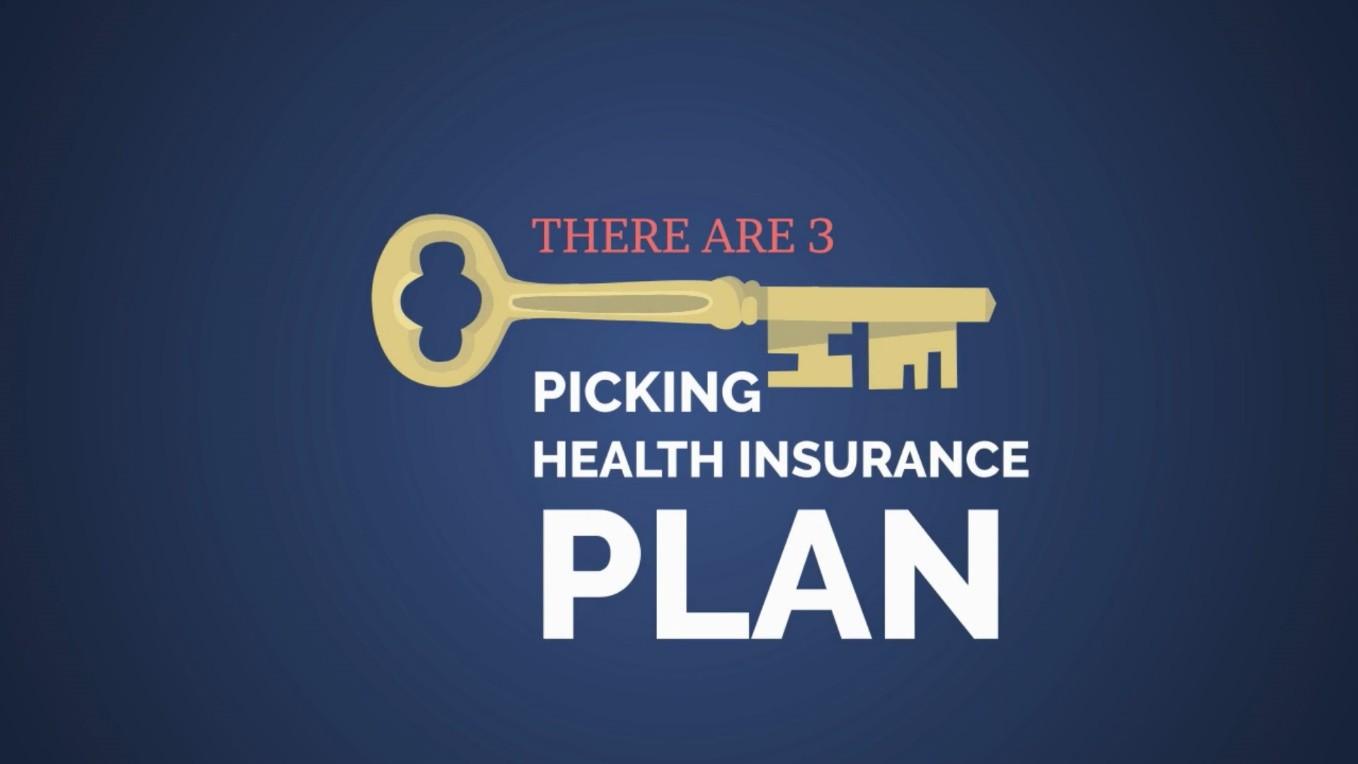
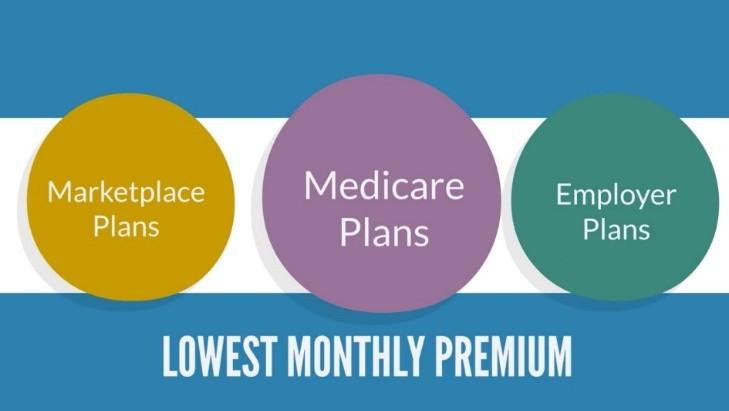



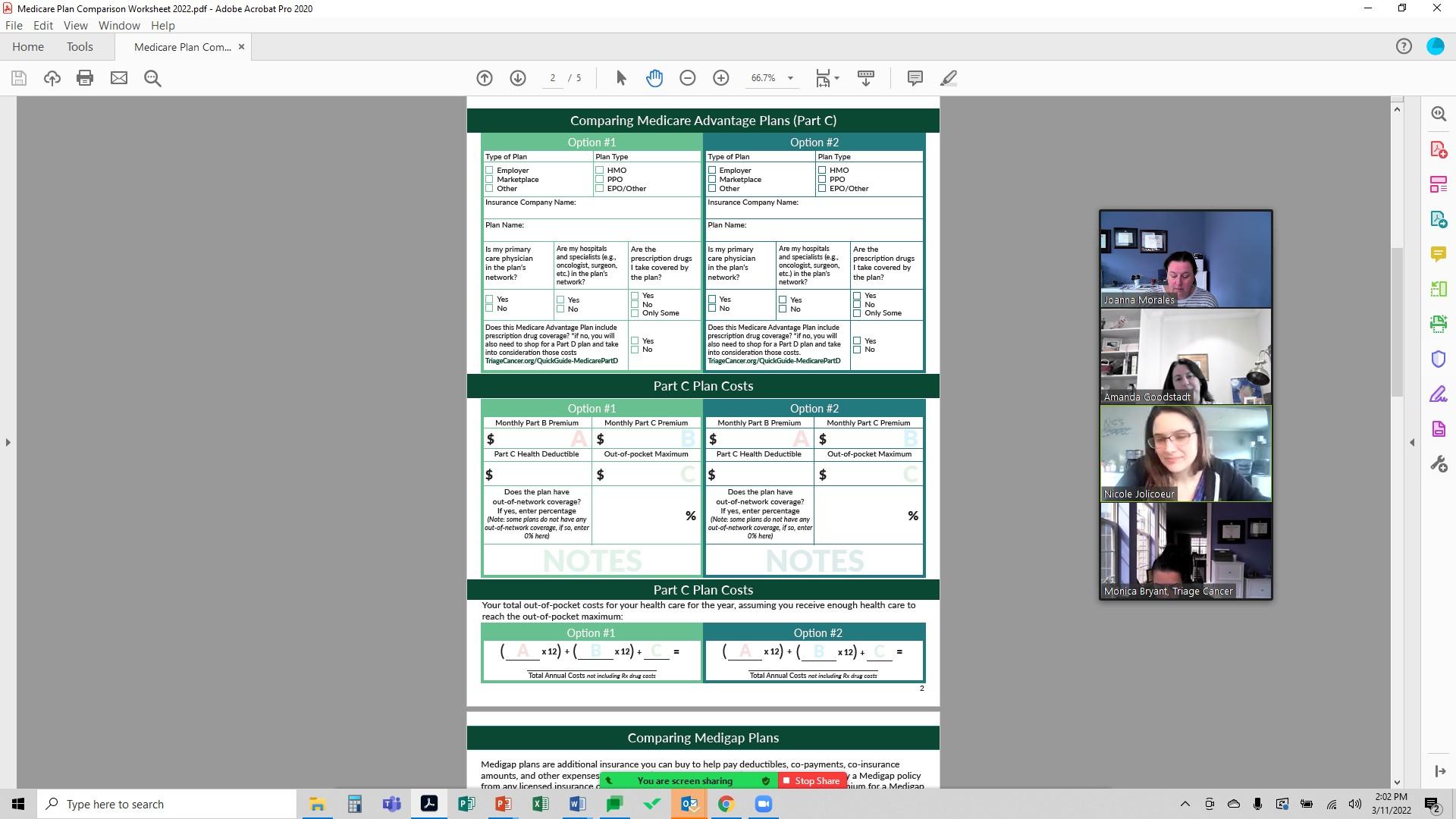

Where Are There Opportunities to Lower Costs? Insura
nce Compa
ny Government: Medicare, Medicaid, Military, State & Local Programs, etc.
Employer

• Health Insurance Premium Payment Program (HIPP)
• Medicaid eligible recipients with group health insurance through an employer
• Medicaid pays premium for group health insurance
• May have more doctors to choose from and other medical services may be covered through private insurance
• 31 states have this program, including: CA, GA, IA, IL, MA, PA, RI, TX, VA

Help with Marketplace Costs
“Four in five customers are able to find a plan for $10 or less a month.”
400% + (2024) $ help reduce monthly premiums to 8.5% of household income Will continue through 2025 under IRA

Medicare Part D – 2025
Inflation Reduction Act of 2022
• $2,000 out-of-pocket maximum for Part D drug costs
• Applies to:
• Part D plans
• Part C plans with drug coverage
• Does not apply to drugs covered by Part B!!!
• If plan has a drug deductible, that counts towards the out-of-pocket maximum
• Cap could increase over time
• Not guaranteed to be $2,000 indefinitely into the future

Changes to Medicare Part D in
2025
• Medicare Prescription Payment Plan
• Out-of-pocket costs can be spread out through the calendar year (aka “smoothing”)
• There is no interest charged on the payments
• Run by your Part D drug plan
• Voluntary program
• You have to choose to sign up
• You can cancel at any time, but you must pay your balance
• You pay nothing at the pharmacy
• Instead, your plan will send you monthly bills for your out-of-pocket drug costs
• This is different than your Part D plan monthly premium bill; and
• Your Part D Explanation of Benefits document
• You can pay by check, credit, or debit card

• Tiering exceptions vs formulary exceptions
• Request can be made by you, your representative, or your prescribing HCP
• Ask your HCP for a supporting statement that says why the drug is medically necessary for you
• Alternatives aren’t as effective, and/or
• Alternatives would cause adverse effects
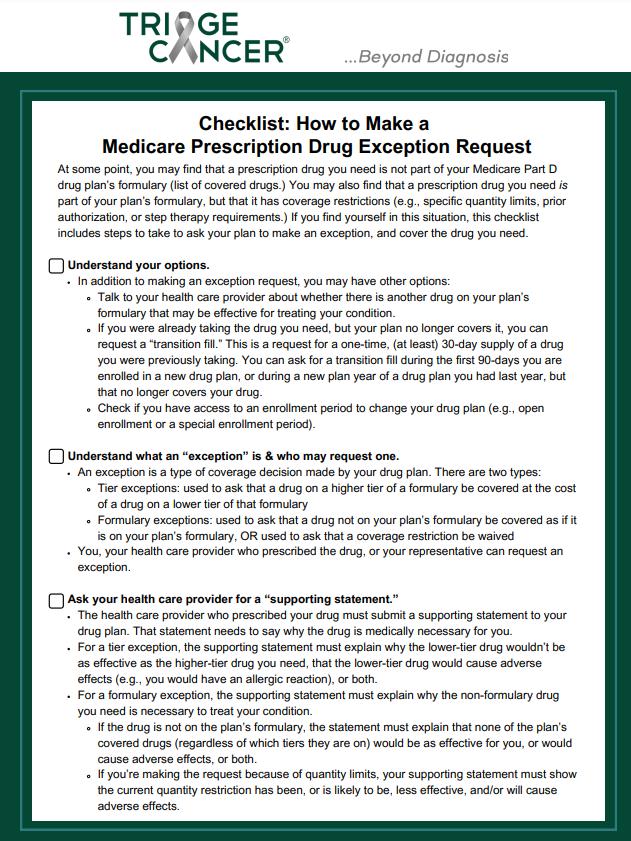
TriageCancer.org/Checklist-MedicarePrescriptionRequest

Help Paying for Medicare Parts A & B
Medicare savings programs (MSPs)
• Helps pay for premiums; and sometimes deductibles, co-payments, & cost-share
• Four types of MSPs:
1. Qualified Medicare Beneficiary (QMB – “Quimby”) Program helps eligible individuals pay for Part A and Part B premiums, as well as deductibles, coinsurance, and co-payments
2. Specified Low-Income Medicare Beneficiary (SLMB – “Slimby”) Program helps eligible individuals pay for Part B premiums.
3. Qualifying Individual (QI) Program helps pay the Part B premiums for certain individuals who are not eligible for Medicaid.
4. Qualified Disabled and Working Individuals (QDWI) Program helps eligible individuals pay their Part A premiums.

Help Paying for Medicare Part D - 2025
• Low-Income Subsidy (aka Extra Help): most people will pay no premium or deductible & have lower co-payments and cost-share
• May be automatically enrolled, but can also apply
• Income limit = 150% FPL; Resource limit = $16,100 (individual), $32,130 (married)
• Pay no more than $4.90 for each generic/$12.15 for each brand-name covered drug
• www.ssa.gov/benefits/medicare/prescriptionhelp
• State Pharmaceutical Assistance Programs (SPAP): pays some premiums or drug costs
• Programs not available in every state: www.medicare.gov/pharmaceutical-assistance-program/state-programs.aspx

Consumer Protections: Appeals
• Denials of coverage (aka “adverse benefit determination” (ABD))
• Internal appeals
• External appeals (individual and employer plans)
• AKA: Independent or External Medical Review
• Conducted by an independent medical review organization (IRMO) or independent review entity (IRE)
• State Health Insurance Agency: Triagecancer.org/StateResources
• Cost: $0 if HHS process. Up to $25 if issuer contracts with IRO or uses state process


Hurdle: Knowledge


• Keep track of:
• Dates, times, and method of any contact (phone, email, etc.)
• Names of people you talk to
• Summaries of your conversations
• Any documents you send or receive
• Important dates

• Good time to delegate to family and friends
TriageCancer.org/AppealTrackingForm


Appeals Checklist
Understand why your claim was denied
Gather your evidence
Submit necessary paperwork
Pay attention to deadlines
Remember the Golden Rule
File external appeal if needed
Expedite appeal if appropriate
Stay organized
Don’t give up!

• Quick Guide to Appeals for Employer-Sponsored & Individual Health Insurance • Quick Guide to Access to Medical Records • Health Insurance Appeals Tracking Form • CancerFinances.org – Health Insurance Appeals Module • Recorded Webinar: Health Insurance Appeals • Animated Video: When an Insurance Company Says No


Managing Medical Bills
• From your insurance company:
We have received a claim We are processing your claim Explanation of Benefits

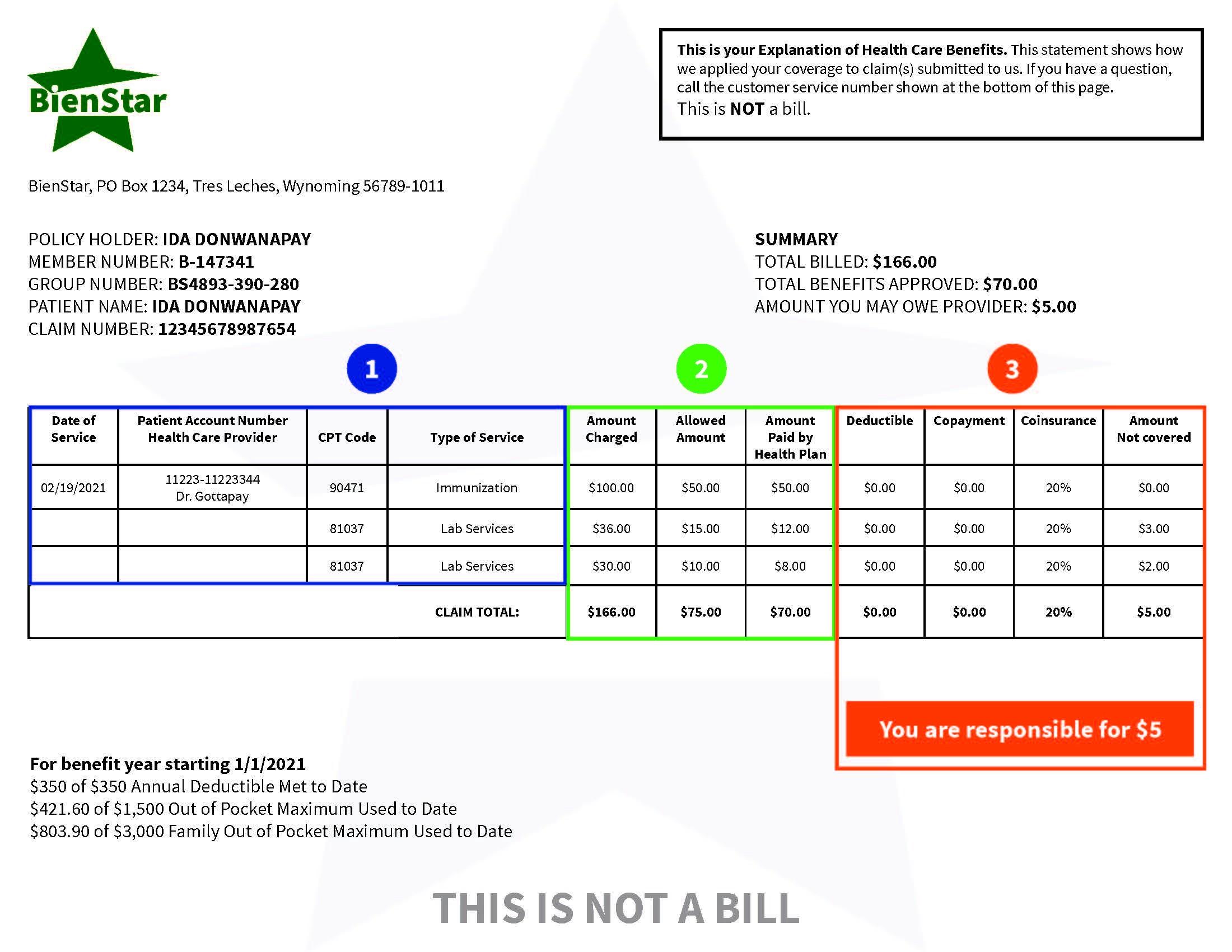

Managing Medical Bills
• From your provider:
• The bill
• Doesn’t always happen in this order!
• Wait for the EOB before paying any bills
• Check for mistakes
• Keep track and communicate with providers
• Ask questions
• Appeal denials


Do you qualify for hospital charity care?
Charity Care
Nonprofit hospitals are required to offer free or discounted health care to patients with certain incomes.
A/K/A financial assistance or ability to pay programs
Can include inpatient and emergency room services
Bill shouldn’t go to collections while application under review
Apply for help from Dollar For: DollarFor.org/TriageCancer


Negotiate!
•Contact providers if having trouble paying your bills
• When:
• Before unpaid bills sent to collections agencies

• What:
• Ask for more time
• Check to see if they would be willing to:
• Write off a portion of your bill;
• Negotiate a payment plan; or
• Accept a lower lump sum payment
Note: works with other creditors, too!

TriageCancer.org/Worksheet-BillTracker
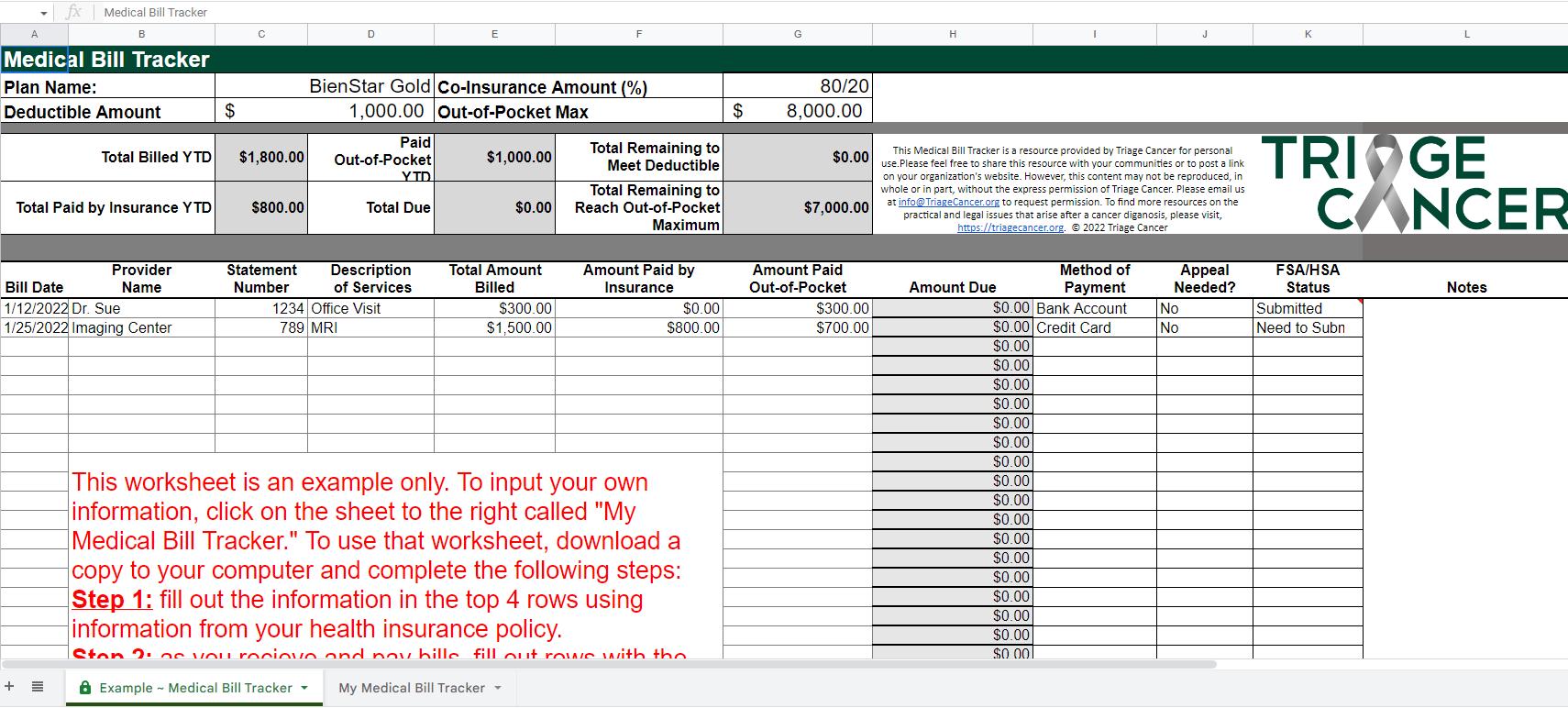



Benefits to Keeping Track . . .
• Paying co-pays & co-insurance when you visit a provider
• What to do if you have already met your OOP maximum?
• What to do when a provider asks you to pre-pay your co-insurance?

Keep Records Of…
Medical bills from all healthcare providers:
Hospital admissions, clinic visits, lab work, diagnostic tests, procedures, treatments
Drugs given & prescriptions ordered
Claims filed
Payments from insurance companies and explanations of benefits
Any pre-authorizations
Dates, names, and outcomes of any correspondence with insurance companies or providers
Non-reimbursed or outstanding medical and related costs
Meals, lodging and travel expenses (including gas and parking)
Your medical records
*Some of these may be tax-deductible!

Educational events for:
Triage Cancer Conferences
• Individuals diagnosed with cancer
• Caregivers
• Health care teams
• Advocates & others
Topics:
• Being an Advocate
• Health Insurance
• Finances
• Getting Organized
• Being Prepared
• Employment & Disability Insurance
October 18, 2025 TriageCancer.org/Conferences
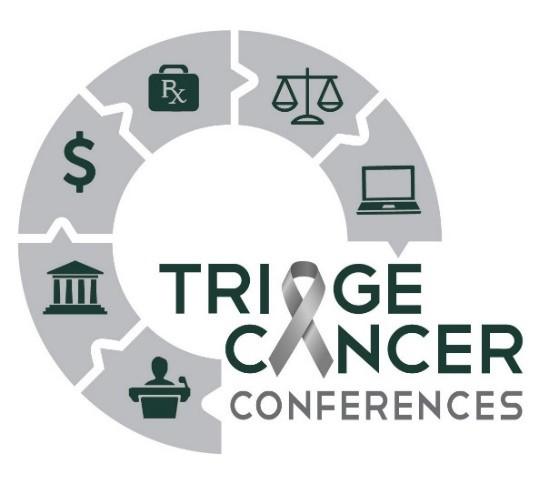
“Absolutely amazing. Triage Cancer Conference supplied me with a lot of details on information that I thought I knew....I was wrong. However, I do feel more confident in each of the topics that were discussed.” –Virtual Attendee
*Free CEs/Contact Hours for nurses, social workers, & patient advocates
*Free PDCs for HR professionals

Triage Cancer Webinar Series
“It is helpful to know this info at the beginning of a cancer diagnosis or at the VERY LEAST to know it exists, as you do not know what you do not know!” –Attendee
Upcoming Topics:
• August 19 ~ Navigating Health Care: How to Plan Ahead
• September 16 ~ Close the Knowledge Gap: Key Tips for Open Enrollment
• October 9 ~ What Should I Know About Medicare? Part 1
Full Schedule & Registration: TriageCancer.org/Webinars
Recordings of Past Webinars: TriageCancer.org/Past-Webinars
*Free Contact Hour/CE for nurses, social workers, & patient advocates
*Free PDCs for HR professionals
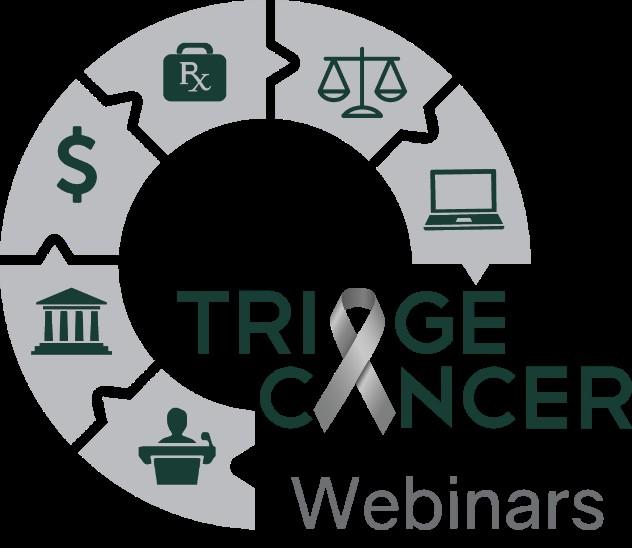



Emotional and Physical Wellbeing: Exercise for Myeloma Warriors: Sweating Out Your Symptoms
Michaela Hillengass, RN, PA ACSM Department of Cancer Prevention and Control
Roswell Park Comprehensive Cancer Center Buffalo, NY
Exercise for Myeloma Warriors: Sweating Out More Than Just Your Symptoms
Michaela Hillengass, RN, PA ACSM
Department of Cancer Prevention and Control
Roswell Park Comprehensive Cancer Center Buffalo, NY
Introduction
• Benefits of exercise in Multiple myeloma
• What can you contribute to improve your own QoL
• Practical intervention
Physical Activity


Hours of Physical Activity per Week

Exercise Patterns in
MM/SMM/MGUS Patients
(n=662)
MGUS/SMM Patients (n=129)
Participants in the HealthTree Foundation’s Cure Hub reported that their diagnoses have impacted their exercise habits. The number of hours per week declined from the five-year period prior to diagnosis to current levels, and participants hoped to be able to do more exercise in the future.
Benefits
of Exercise in Multiple Myeloma
Improvement of
• Muscle strength
• Mobility and endurance
• Neuropathy
• Activities of daily living (ADLs)
• Immune system
• Fatigue
• Pain
• Body composition
• Bone health
Clinical Significance of Bone Disease in Multiple Myeloma





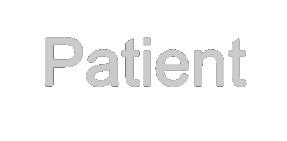




• Approx. 90% of patients show lytic changes

• Patients with bone disease show a by 20% increased mortality













•Approx. 80% of all myeloma patients suffer from a pathological fracture => important reasons of morbidity: - bone pain - pathological fractures - hypercalcemia




Influenceable Factors - Obesity







Influence on Body Weight






Increase in Muscle Strength
Scientific evidence:
• EXIST Trial (Person et al., 2017): 18 weeks of resistance training
=> Grip strength from 35.5kg to 40.9kg
=> STS from 15.5-18.7
• Pilot Study performed at Roswell Park Comprehensive Cancer Center (strength group) (walking group) (combined)




• Squat
• Sit to stand
• Going up and down the stairs
• Walking
(source: findthatmeme.com)

Improved Mobility and endurance
Walking
Stationary bike
Elliptical

Effects of Exercise on Functional Parameters
Strength Training Combined
Walking
(endurance)
(endurance and strength)
Effects of Exercise on Functional Parameters
Strength Training Walking Combined
Improved Neuropathy
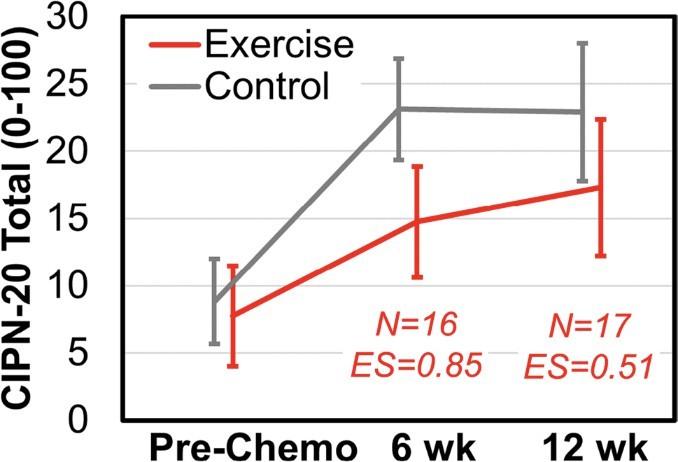
Example Exercises
Balance exercises, e.g.: lunges, staggered stance exercises, one leg exercises, on uneven surface
(source: marathonbook.com)

Effects of Exercise on Pain

Example Exercises
• Stretches
•Muscle strengthening (which leads to better posture)
• => anecdotal reports of:
•Easier getting off the floor (also strength related)
• Having no pain in lifting heavy turkey into oven

Impact on Immune System

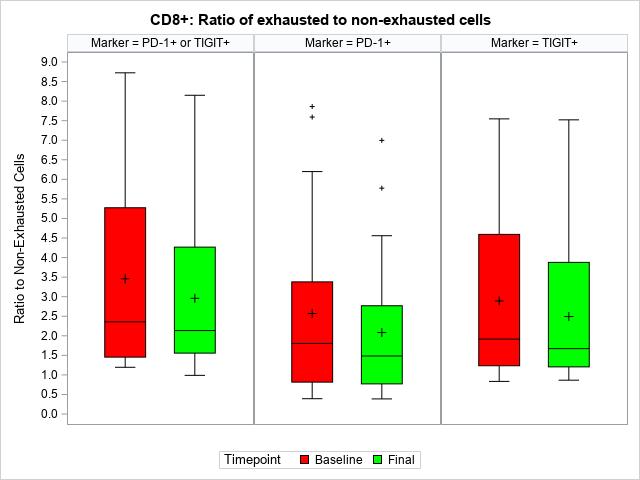
CD4+ T helper cell and CD8+ cytotoxic T cell populations became less exhausted by the end of the six-month intervention.
Joseph 2023 ASCO
Joseph 2024 Clin Lymphoma Myeloma Leuk
Example Exercises
• Brisk walk/jog
• Walking stairs/flights of stairs

Improved Fatigue
• Stretches of all kind
• Walking
=> anecdotal reports of:
• being able to walk the dog again
• Sleep better
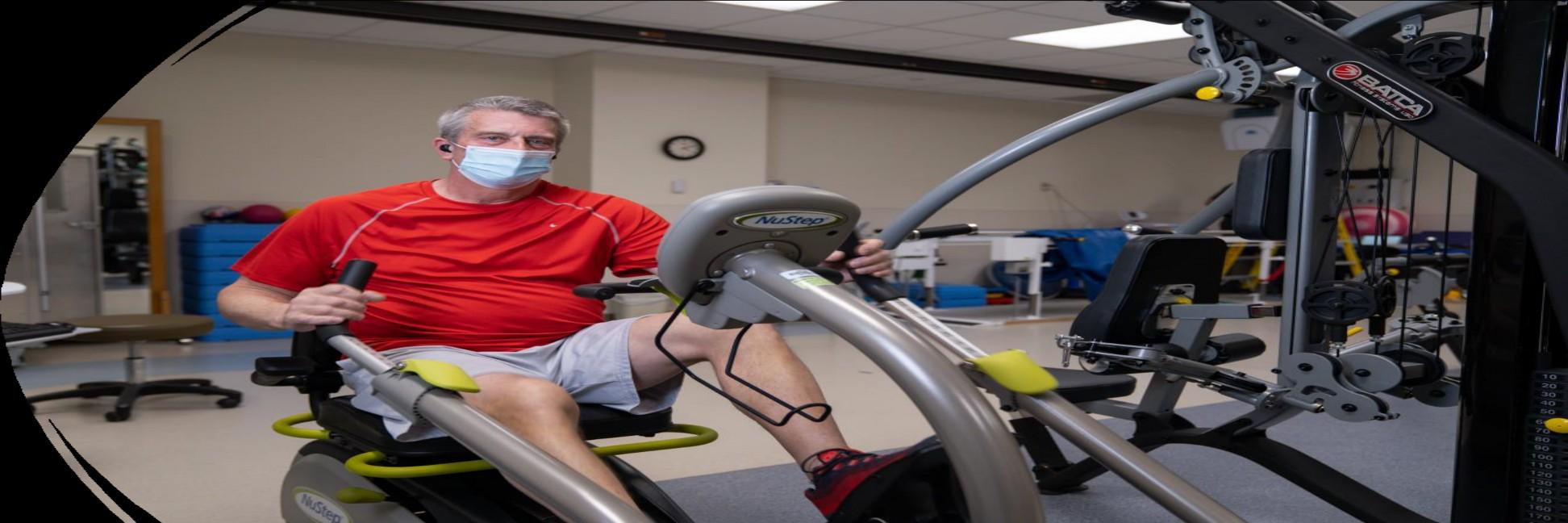
Facilitation of Activities of Daily Living (ADL’s)
• Bicep curls
• Shoulder exercises
• Squats
• Arm raises
• Balance exercises
(source: fity.club)

Safety measures
First and foremost: Ask your doctor regarding limitations/restrictions
Utilize a tumor board if available
Drink plenty of water before, during and after workout, it helps you stay hydrated and reduces the risk of injuries
Wear comfortable clothes and shoes
Keep arm and leg joints always slightly bent
Make slow, steady movements
Start with light weights and low resistance and increase over time
Do not forget to breath during the movement
STOP if you feel any pain!
Summary
Being physically active has a lot of benefits, not only when we are sick
It does not need a lot of tools to start moving
Have fun in what you do
Let’s get started
Exercise session:
Repeat the following exercises as often as you can within 3 minutes: (6 repetitions)
• Squats
• Low impact jumping jacks
• Reverse lunges
• Shadow boxing
S.D.G
Sylvia

Partnering with the IMF
Dsouza,
Vice-President,
Development International Myeloma Foundation
The Impact of Engagement & Philanthropy
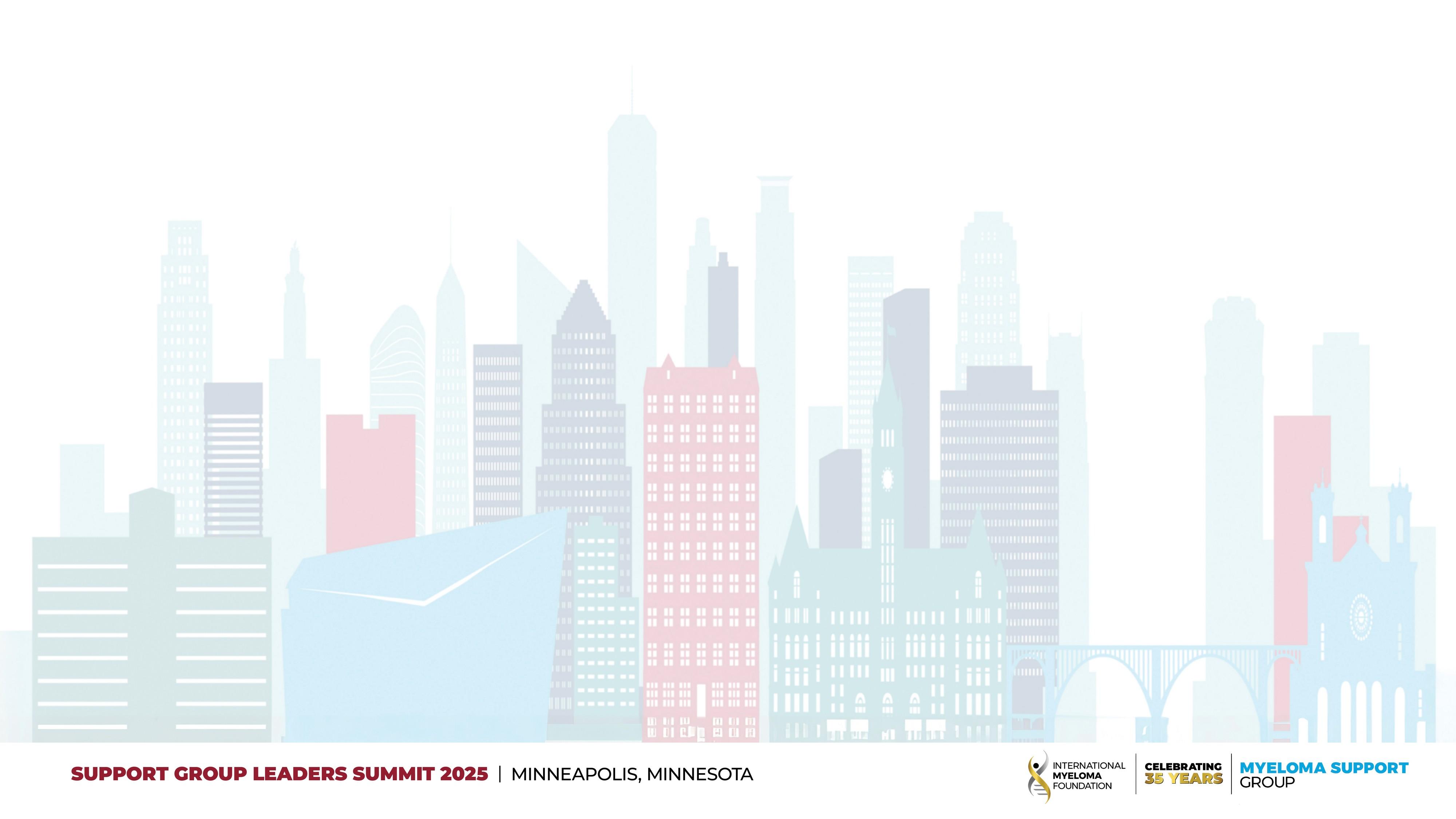
Sylvia Dsouza IMF VP, Development
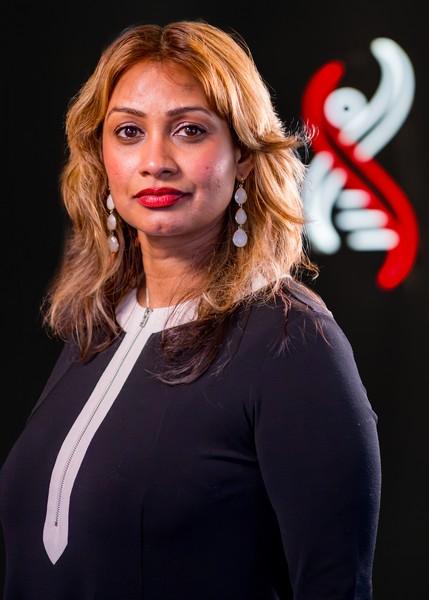

My Purpose at the IMF


• Support and advance the mission and vision of the IMF
• Role at the intersection of community, relationships and revenue generation
• Inspire partnerships, secure philanthropic support and resources for the IMF through diverse mechanisms
• Have the incredible honor of working with dedicated volunteers, partners and key stakeholders from the US and across the globe.
Philanthropy: The Act of Giving To Improve Well-Being
The term originates from the Ancient Greek word "philanthrōpía," meaning "love of humanity"



Philanthropy Comes In Many Forms

Philanthropy Comes In Many Forms

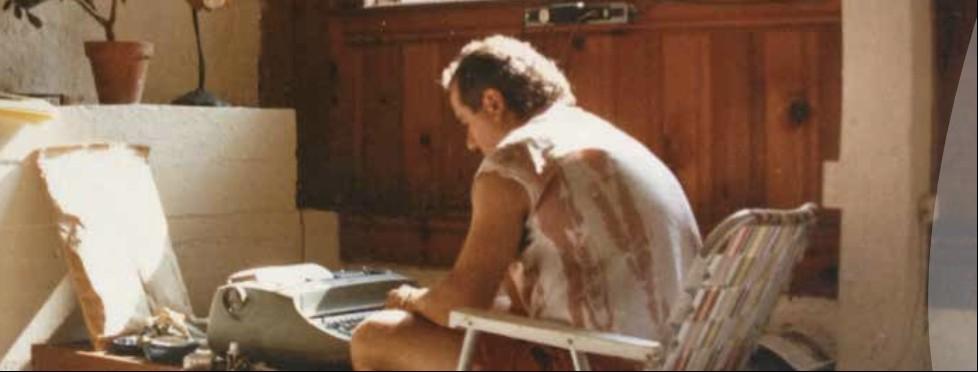

The Impact of Your Engagement and Philanthropy


Research: The IMF established a Scientific Advisory Board (SAB), a global dream team of 12 renowned myeloma experts, to guide the IMF’s research initiatives and identify areas for investment and expansion.

Support: The IMF celebrated the 25th anniversary of the Support Group Leaders Summit in San Antonio, TX with 98 Support Group Leaders in attendance, highlighting the theme of ‘Celebrating People, Empowering CoMMunities, Embracing Hope.’

Education: Through our M-Power® Initiative, 12 scholars from HBCUs presented research posters at the National Medical Association Annual Meeting in New York City, four of which were accepted for presentation at the American Society of Hematology (ASH) Annual Meeting.

Advocacy: We launched the IMF Advocacy Master Class to train and empower a new cohort of patient advocates to engage directly with policymakers to advance key priorities including oral parity, expanded telehealth access, and increased research funding.
The Impact of Your Engagement and Philanthropy: Annual Giving


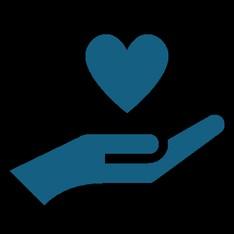
Monthly and annual gifts sustain the IMF's core programs and services.

We've received approximately 6,500 monthly and annual gifts in FY2025.*
The average monthly/annual gift amount is $228.61, higher than the industry average for organizations of similar size.**
The Impact of Your Engagement and Philanthropy: Transformative Giving


Major and transformational gifts make up 38% of our fundraising revenue (gifts that are $25K and above).

We've received approximately 40 major and transformational gifts in FY2025

The second year of the Iceland Cycling Expedition is projected to raise >$1.1 million!
ICE 2025 Participants (12 Patients, CarePartners, Clinicians)
August 27 – September 2
Christian Hoff (Patient)
Pittsboro, North Carolina

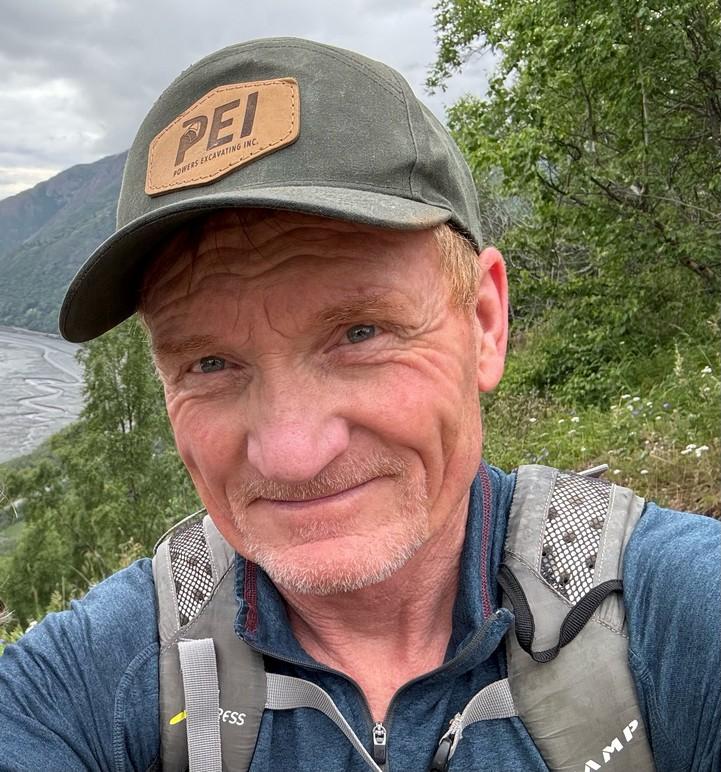
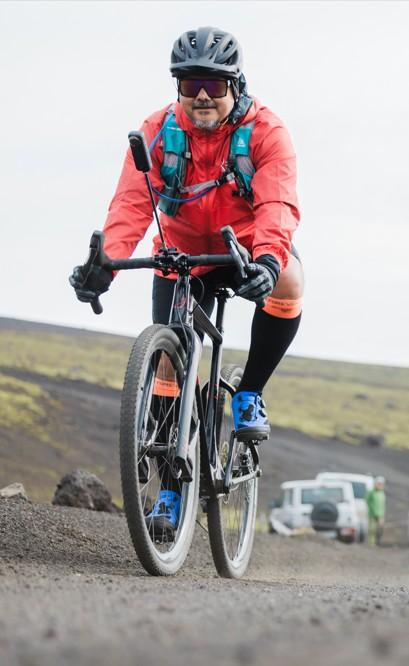
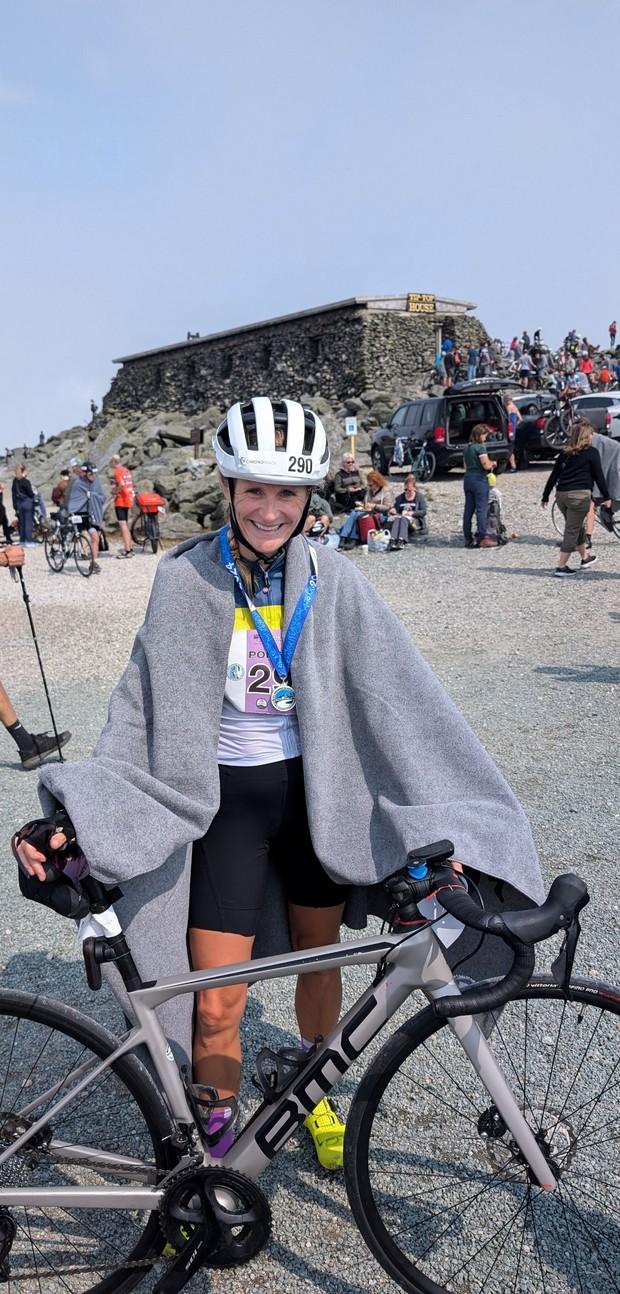
Katherine Podgorski (Patient)
Toronto, Canada

Dr. Douglas Sborov (Myeloma Clinician and Researcher)
Huntsman Cancer Institute at the University of Utah
Dr. Saad Usmani (Myeloma Clinician and Researcher)
Memorial Sloan Kettering, New York

Dr. Jeffrey Zonder (Myeloma Clinician and Researcher)
Department of Oncology at Wayne State University
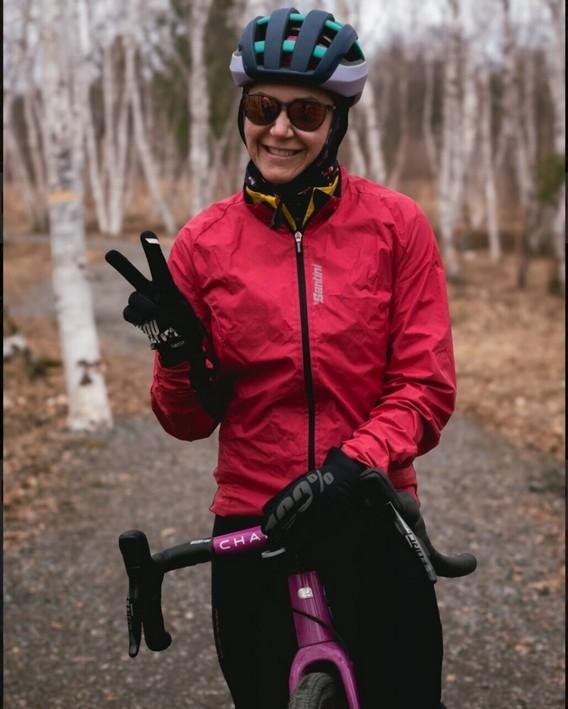
Ashley Dieks (Patient)
Garson, Ontario

ICE 2025 Participants myeloma.org/ice2

Tatum Byhre (Care Partner)
Minneapolis, Minnesota
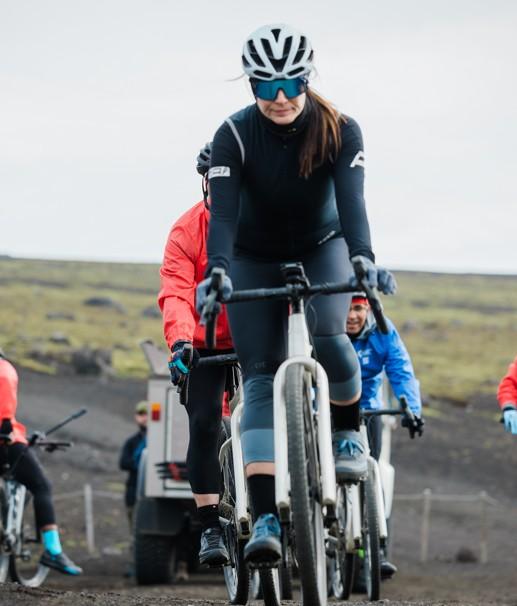
Benjamin Freund (Patient)
East Canaan, Connecticut
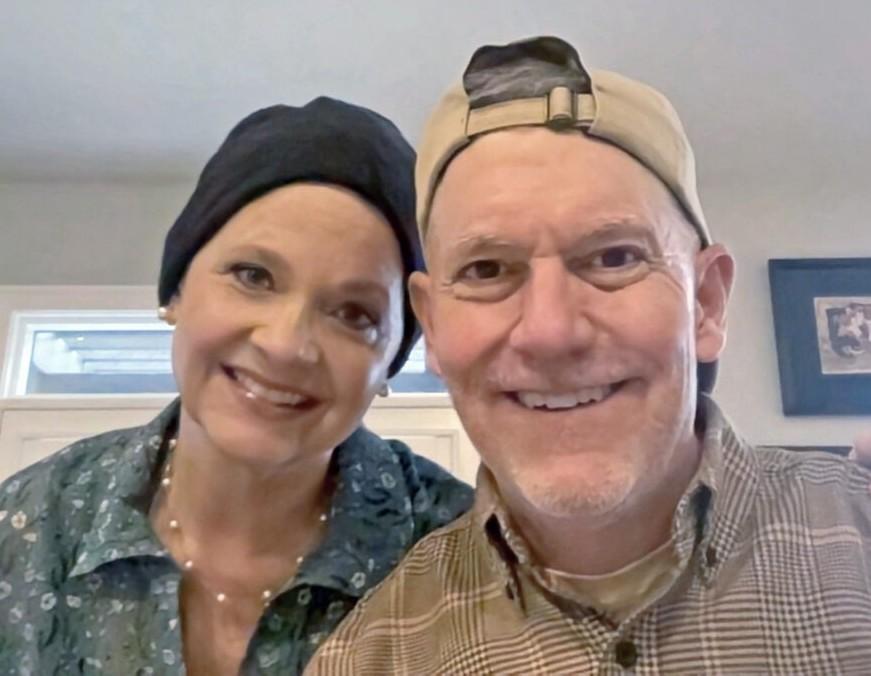
Troy Fischer (Care Partner)
Bloomington, Illinois

Dr. Cristina Gasparetto (Myeloma Clinician and Researcher)
Duke Cancer Institute, North Carolina
Jered Haddad (Patient)
Germantown, Tennessee






Q&A WITH GUEST PANEL
Housekeeping Items
Presentation Slides: Are available by scanning the QR code, Instructions are on the QR code handout on each table.
Program Evaluations: evaluations at the end of the program or on your way out.
Restrooms: Restrooms are located outside the meeting room, either down the stairs from the welcome desk, or on this level: past the welcome desk turn left and the bathrooms are on your left.

Badge Holders: Please return your badge holders and we can recycle them.
We greatly appreciate your time and feedback!


IMF PATIENT AND FAMILY SEMINAR
LOS ANGELES AGENDA
SATURDAY MORNING

Welcome & Announcements
Robin Tuohy, Vice President, Patient Support
International Myeloma Foundation
IMF Highlights
Diane Moran, RN, MSN, EdM
Chief Executive Officer (Interim) and Senior VP, Strategic Planning International Myeloma Foundation
Understanding Clinical Trials
Joseph Mikhael, MD, MEd, FRCPC, FACP, FASCO, Chief Medical Officer, International Myeloma Foundation
Fireside Chat: What is the Future of Myeloma? With Q&A
Joseph Mikhael, MD, MEd, FRCPC, FACP, FASCO, Chief Medical Officer, International Myeloma Foundation
Shaji Kumar, MD
Mayo Clinic, Rochester, MN
BREAK
Breakout Sessions #1: Treating Myeloma
Breakout A: Newly Diagnosed: Frontline Therapy
Sarah Lee, MD
City of Hope, Duarte, CA
Breakout B: Managing Relapsed Myeloma
Murali Janakiram, MD, MS
City of Hope, Duarte, CA
LUNCH
IMF PATIENT AND FAMILY SEMINAR
LOS ANGELES AGENDA
SATURDAY AFTERNOON

Advocacy Update: What you need to know
Danielle Doheny, Director of Public Policy and Advocacy International Myeloma Foundation
Symptom Management and Living Well with Myeloma
Nurse Leadership Board of the IMF
Donna D. Catamero, ANP-BC, OCN®, CCRC
The Mount Sinai Health System
Closing the Gap: Health Disparities in Myeloma
Joseph Mikhael, MD, MEd, FRCPC, FACP, FASCO, Chief Medical Officer, International Myeloma Foundation
Breakout Sessions #2: Patients and Care Partners
Breakout A: Patients Only – Lessons Learned Michael Tuohy, 25-year Myeloma Patient, Support Group Leader
Breakout B: Care Partners Only
Robin Tuohy, Vice President - Patient Support International Myeloma Foundation & 25-year care partner
RETURN TO MAIN SESSION
Grab-and-Go Refreshments
Controversies in Myeloma: Moderated by Dr. Joseph Mikhael
Shaji Kumar, MD
Mayo Clinic, Rochester, MN
Robert Vescio, MD
Cedars-Sinai, Samuel Oschin Cancer Center, Los Angeles, CA
Ask – the – Experts w/ Guest Faculty
Closing Remarks & Evaluation
Upcoming IMF Events

Patient and Family Seminars
October 3 - 4, 2025 – Chicago PFS – Chicago Marriott
Schaumburg
Regional Community Workshops
September 27, 2025 – Waltham RCW – Embassy Suites by Hilton Boston Waltham
November 15, 2025 – Raleigh RCW – Sheraton Raleigh
Hotel
Online Community Workshops
November 18, 2025

Thank you to our sponsors!












5:00 – 7:00 PM Welcome Reception

Please return to this ballroom
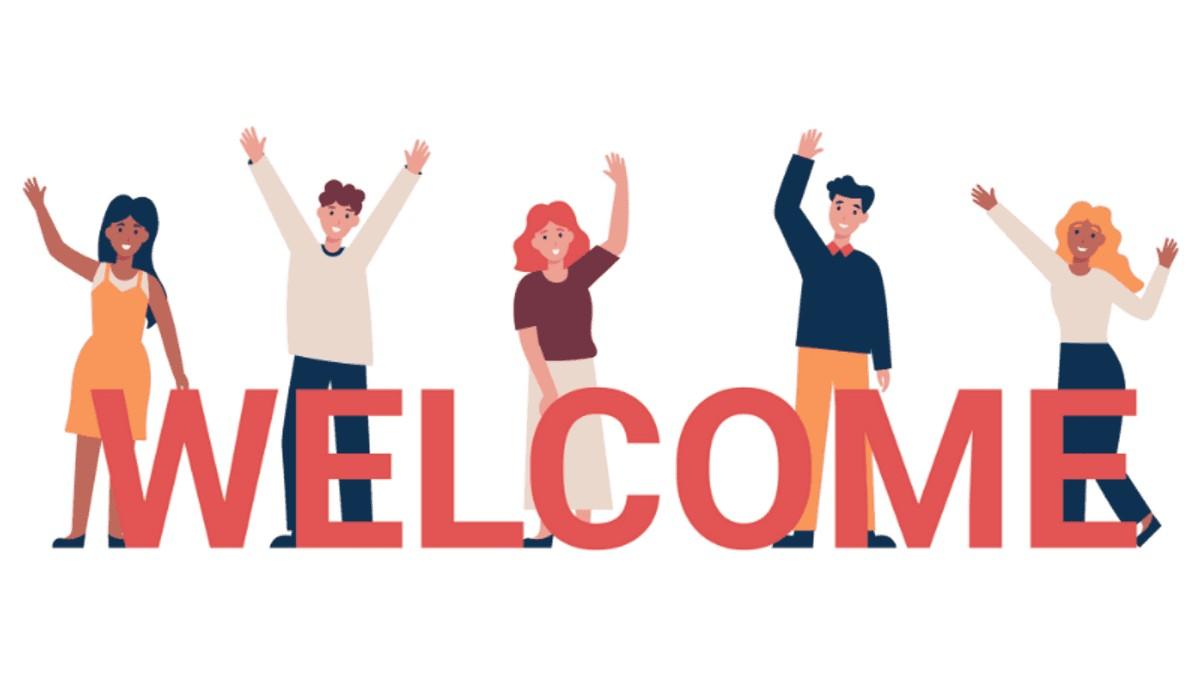

OUR VISION:
A world where every myeloma patient can live life to the fullest, unburdened by the disease.
OUR MISSION:
Improving the quality of life of myeloma patients while working toward prevention and a cure.

IMF Core Values:
These are the core values we bring to accomplishing our mission each day.
Patient Centric
The patient experience is the focus of everything we do. Every interaction is an opportunity to establish a personal connection built on care and compassion which is the basis for continued support.
Respect All
As a team, we value honesty and transparency while creating a culture of mutual respect. We foster a myeloma community built on sincerity, authenticity, and kindness.
Excellence and Innovation
We value accountability, personal responsibility, and a steadfast commitment to excellence. We respect the legacy and reputation of our organization while seeking new solutions and advancements to improve outcomes, quality of life, and access to the best available resources for everyone impacted by myeloma.
Honor differences
We recognize each team member's skills and talents through collaboration and cooperation. Our programs aim to celebrate and support the diversity of our patients and their communities.





